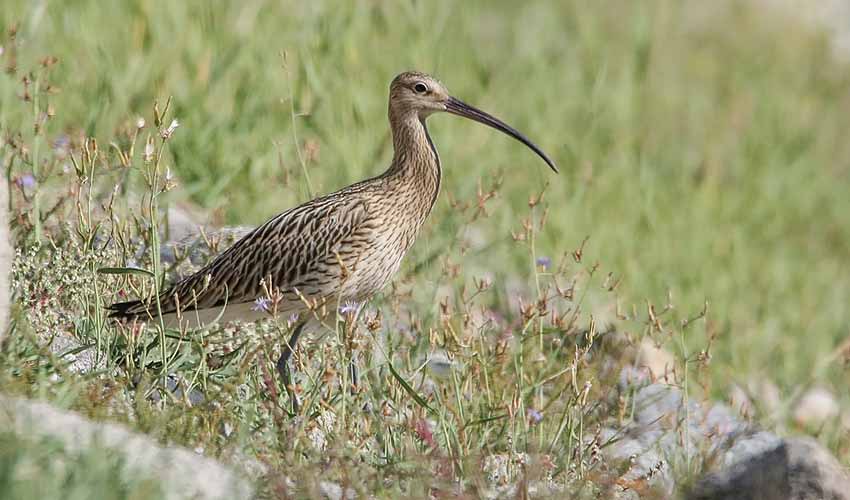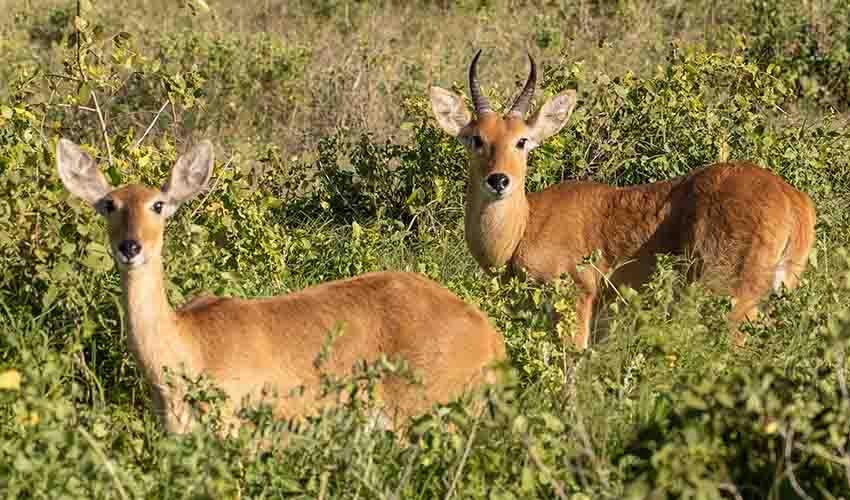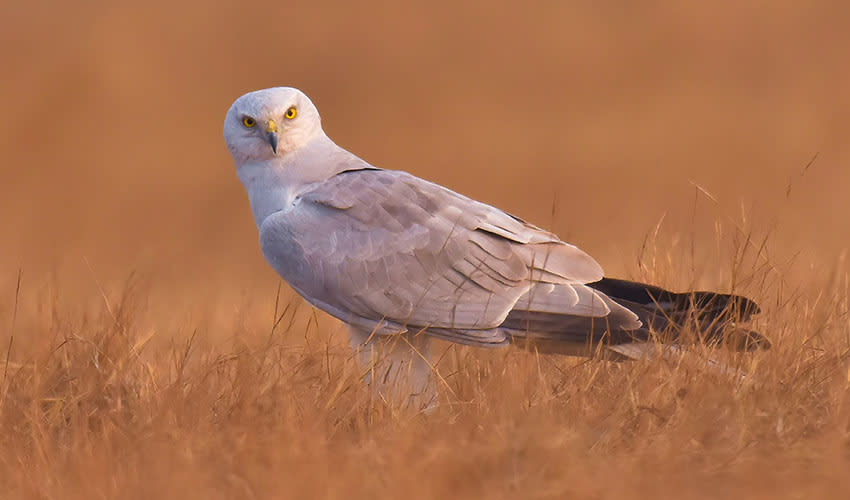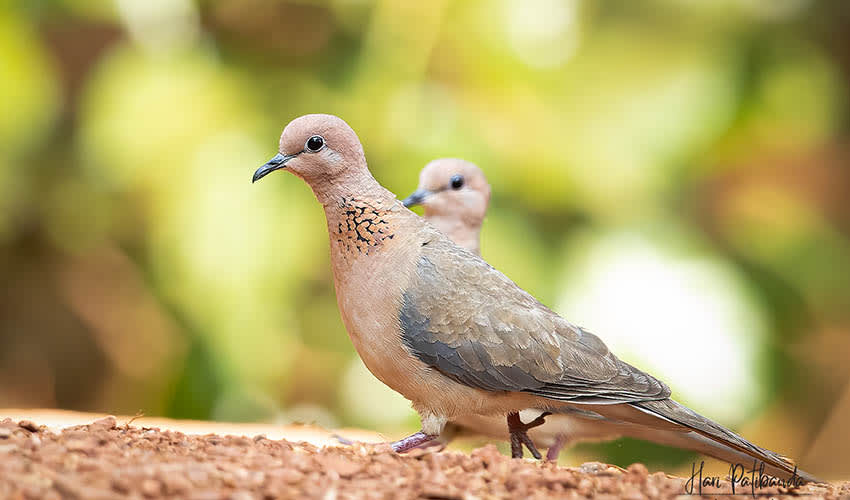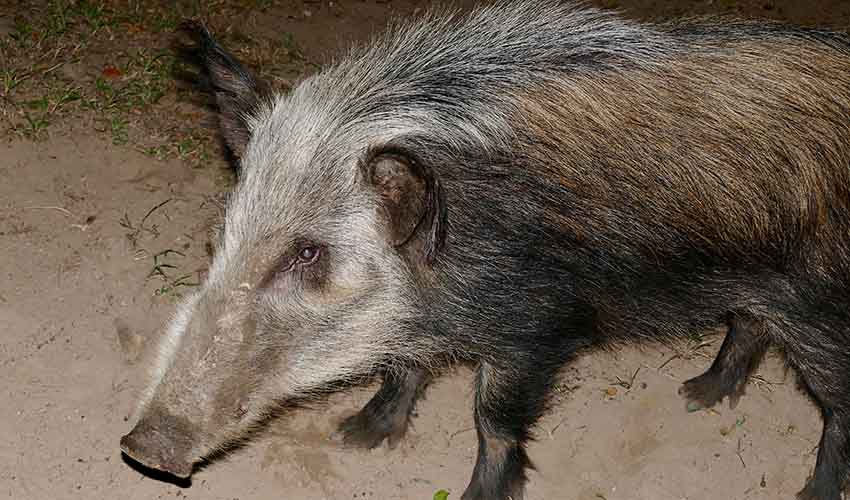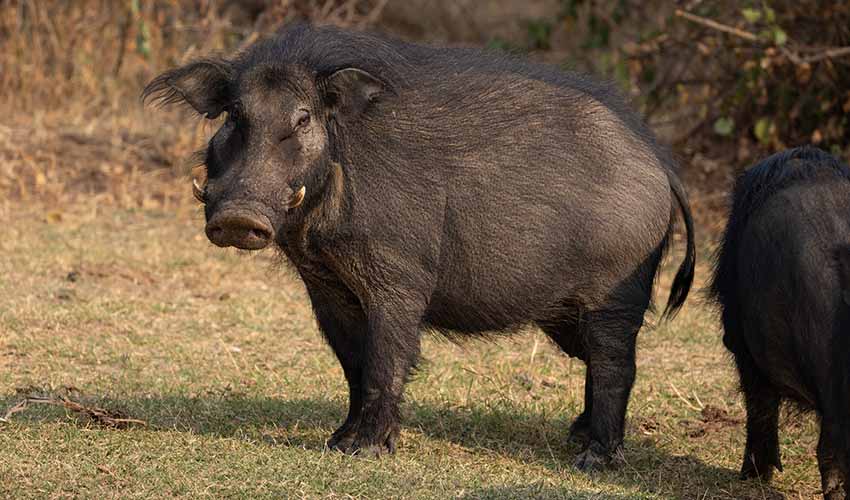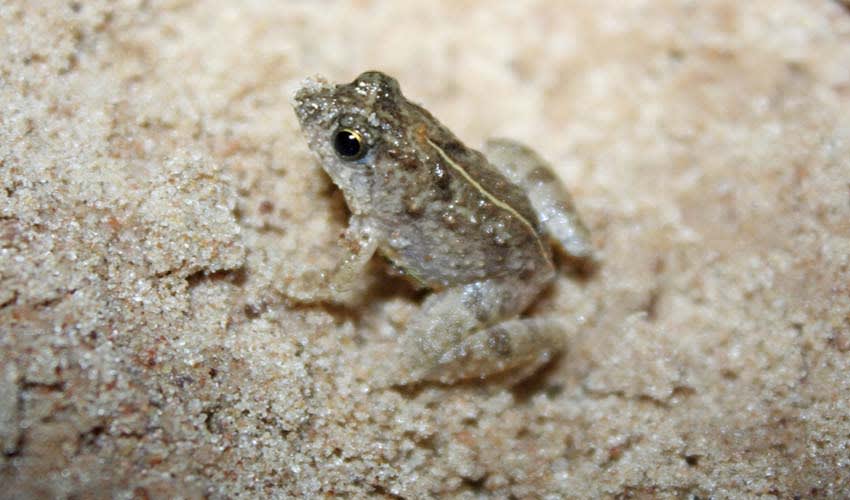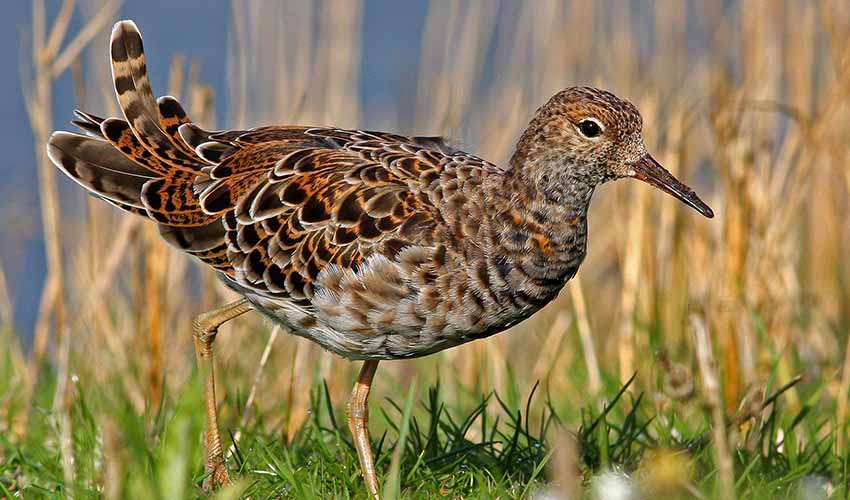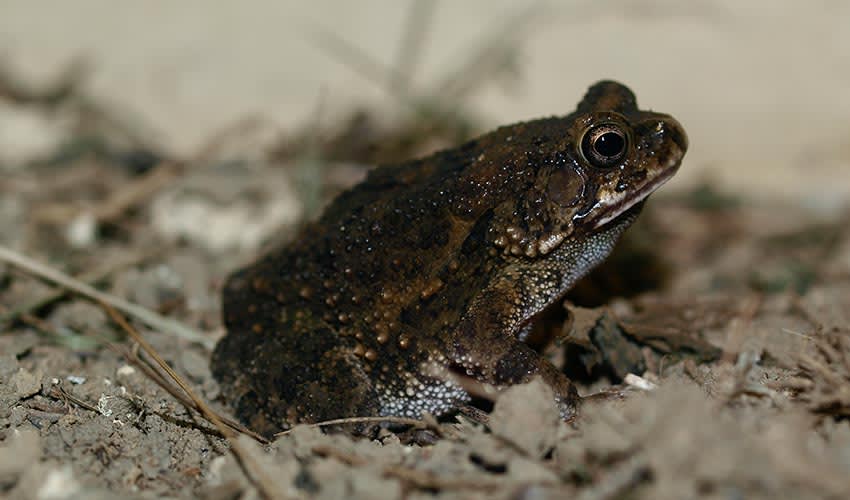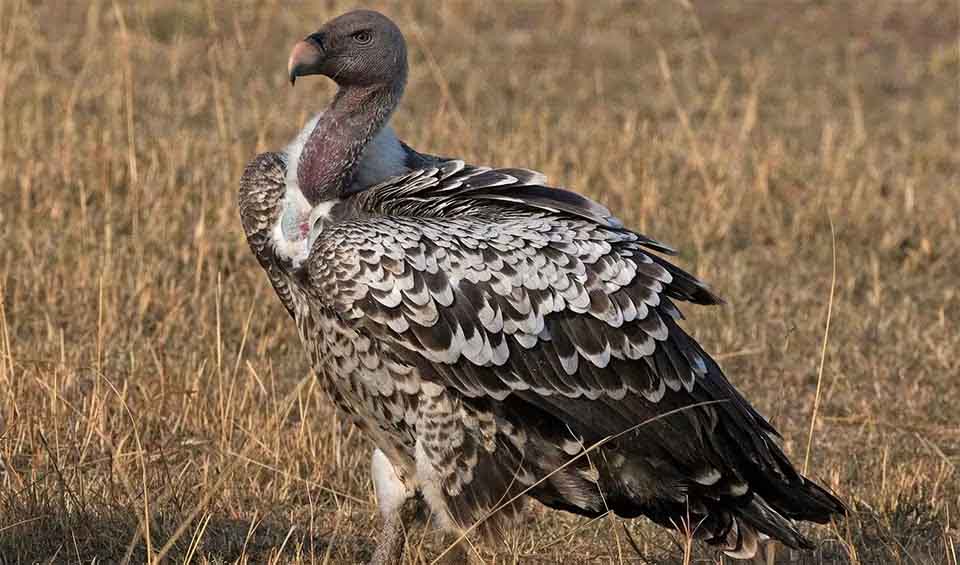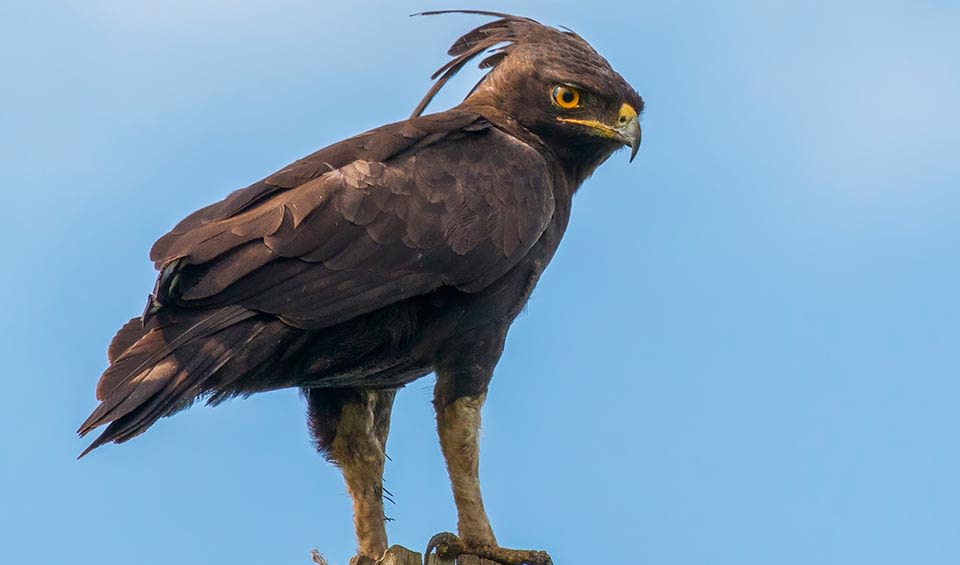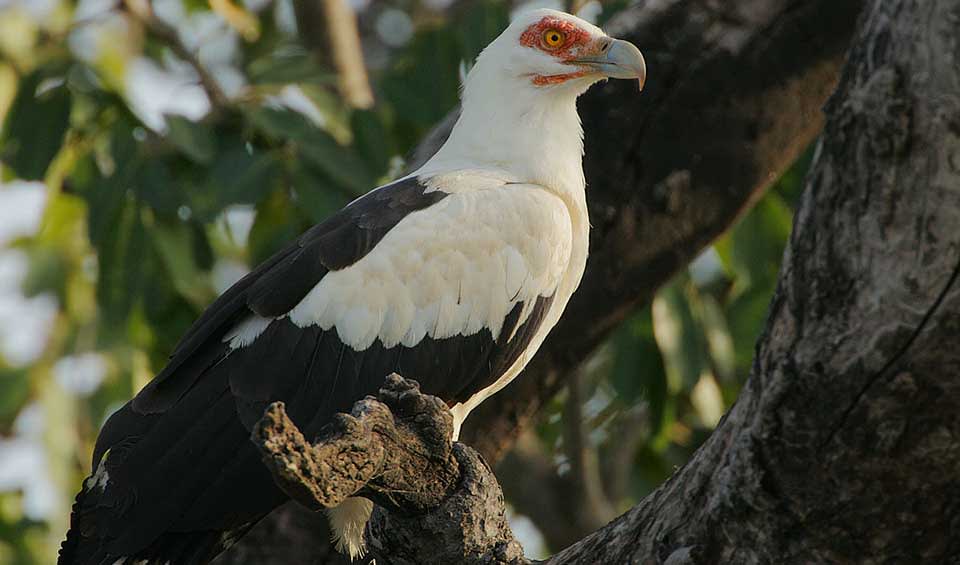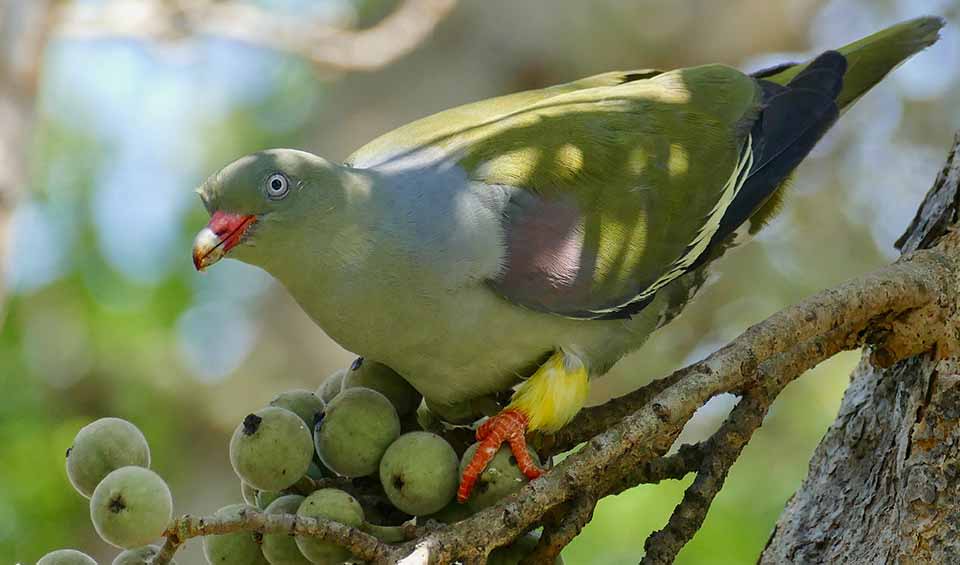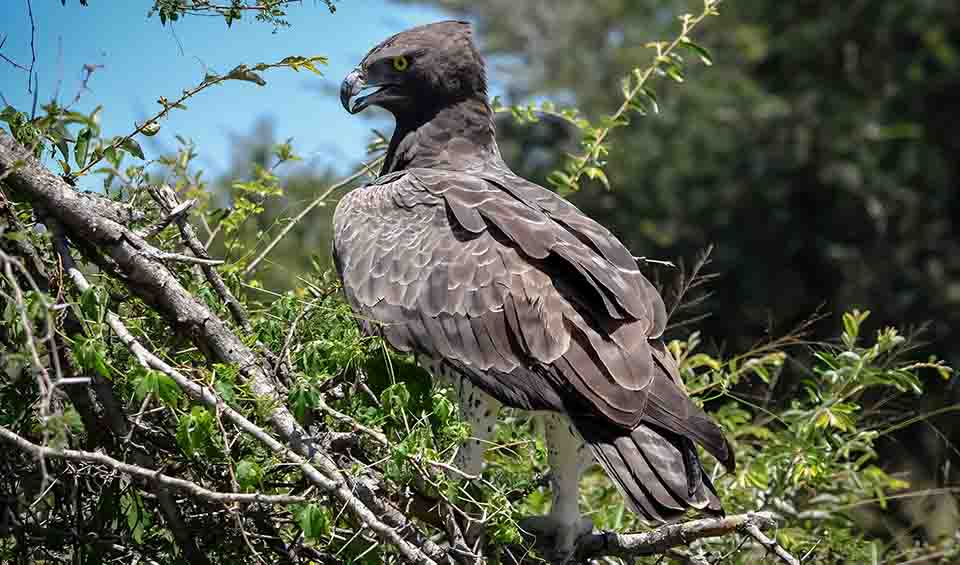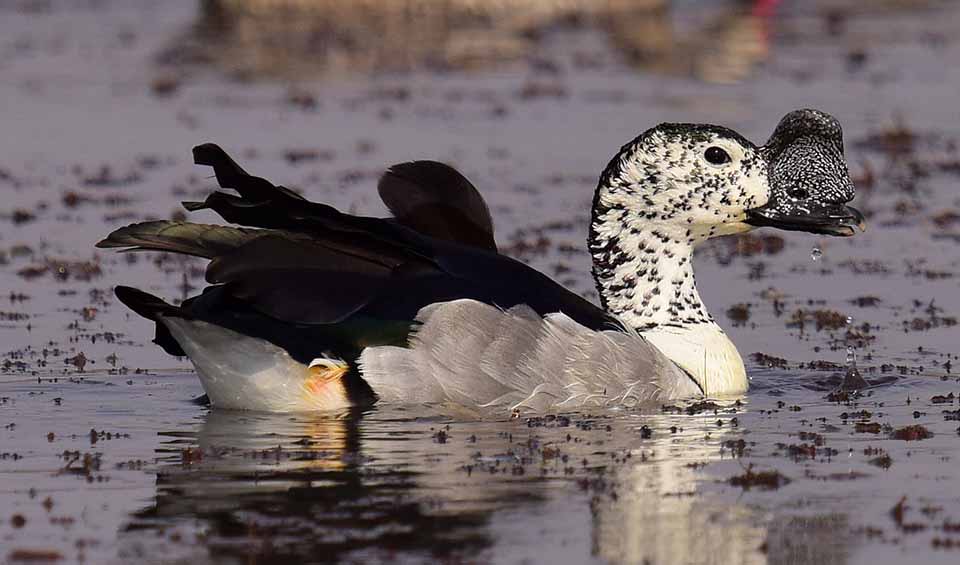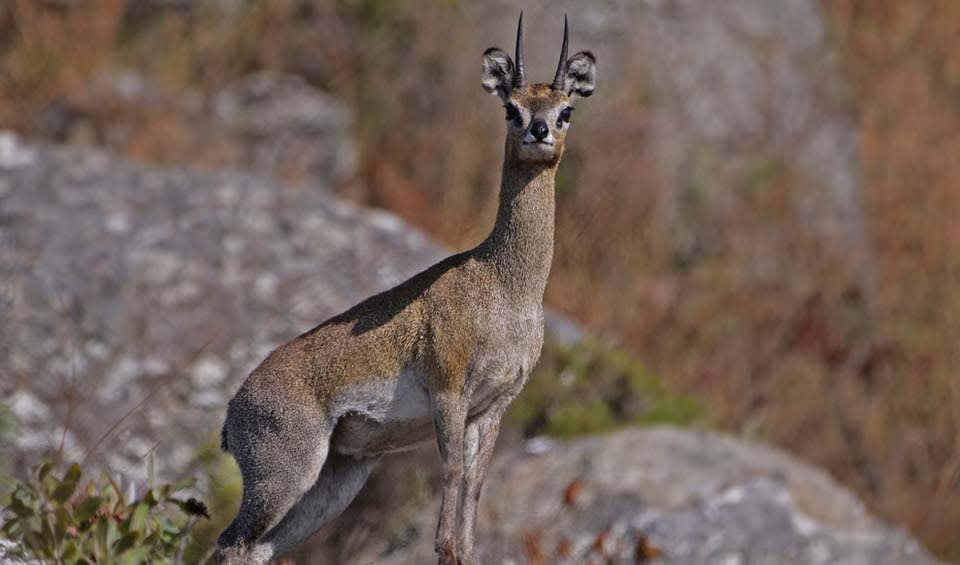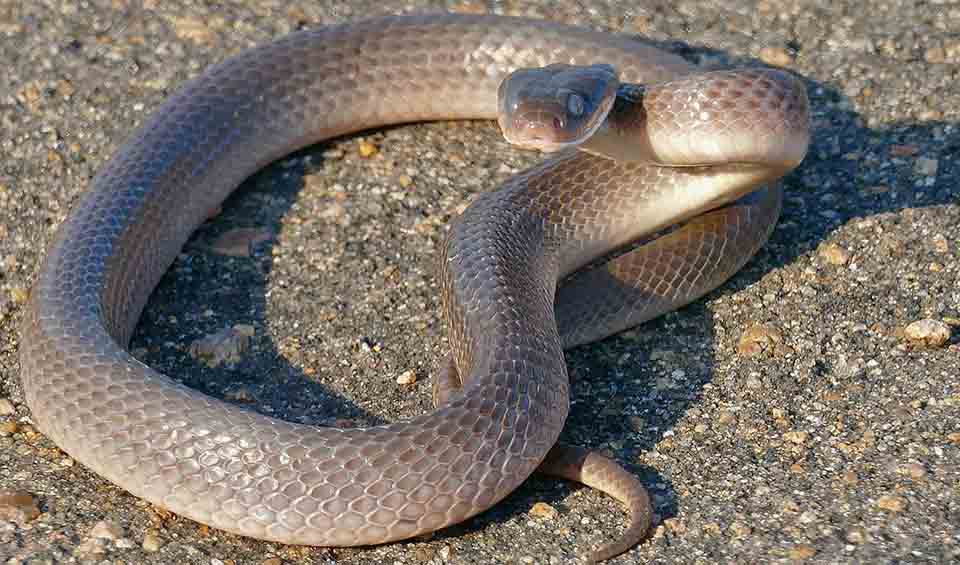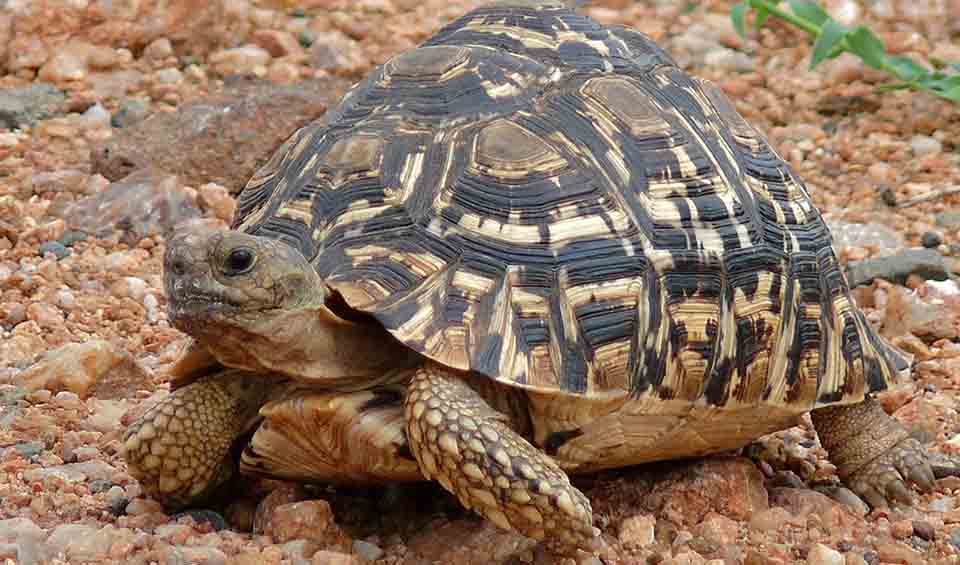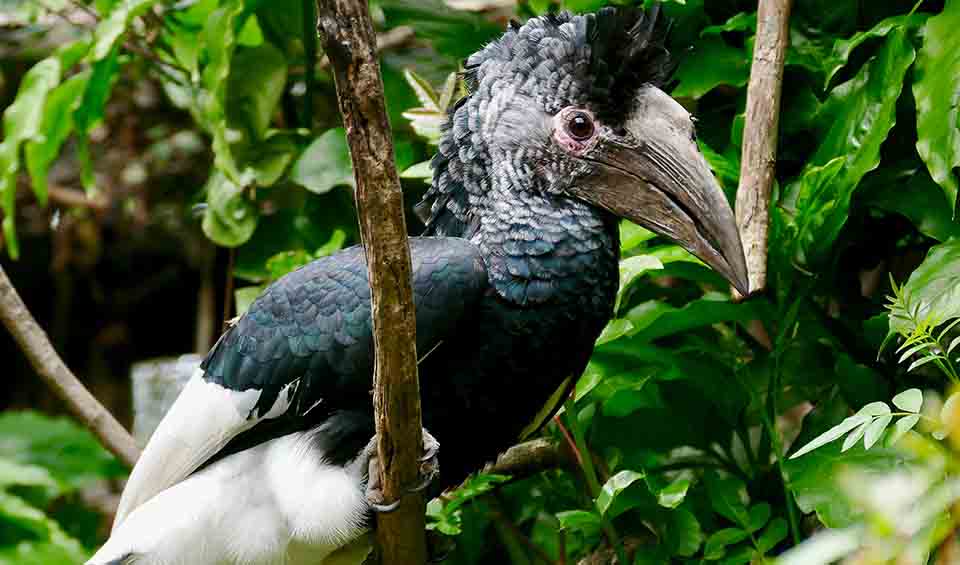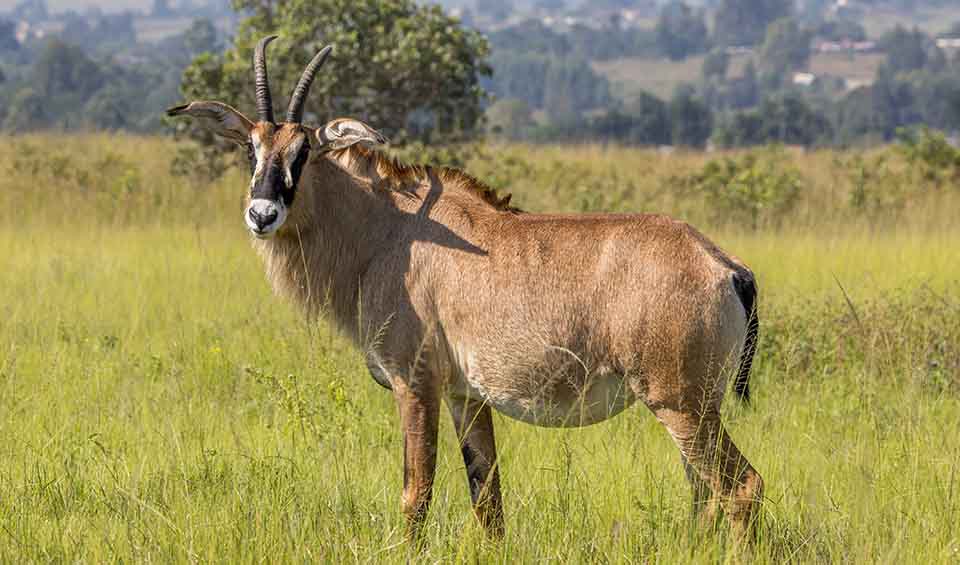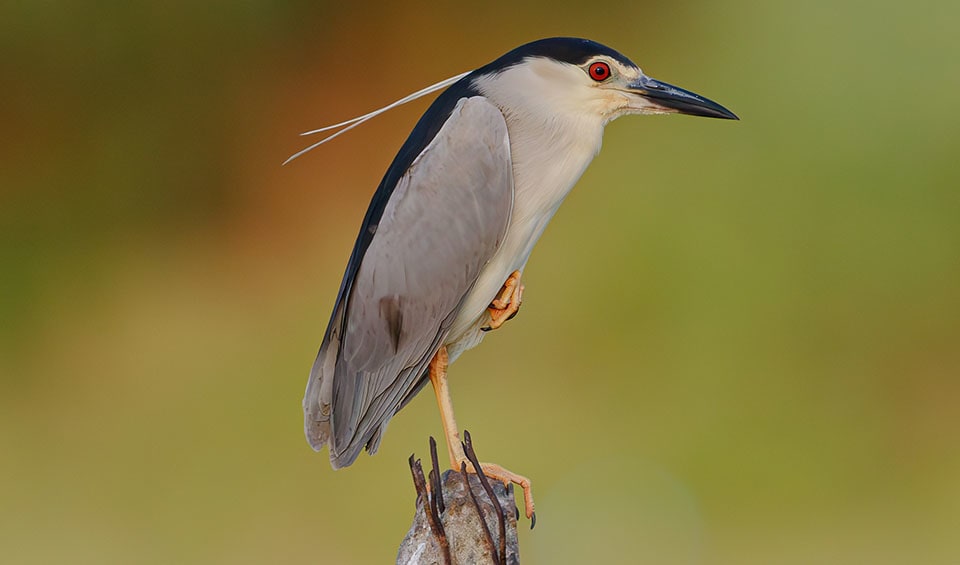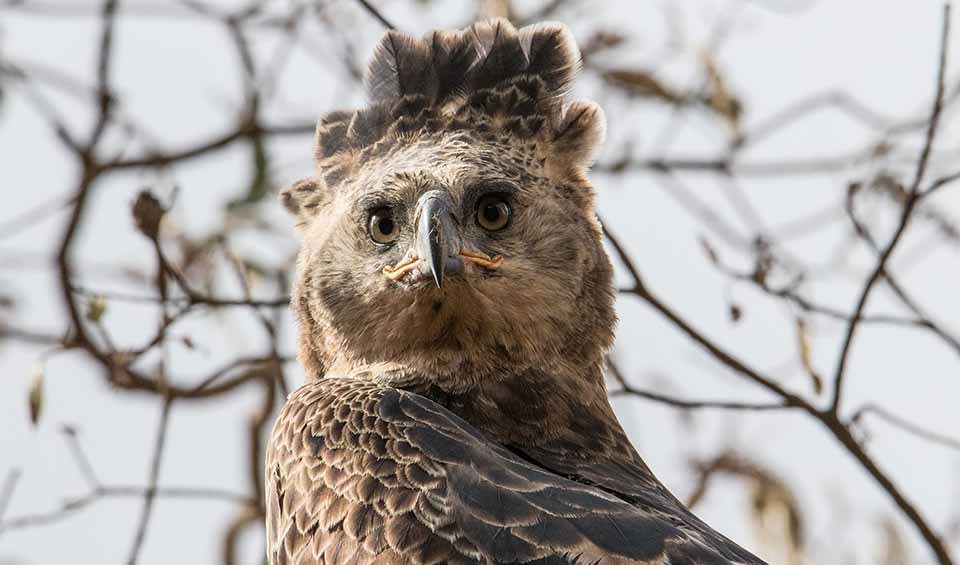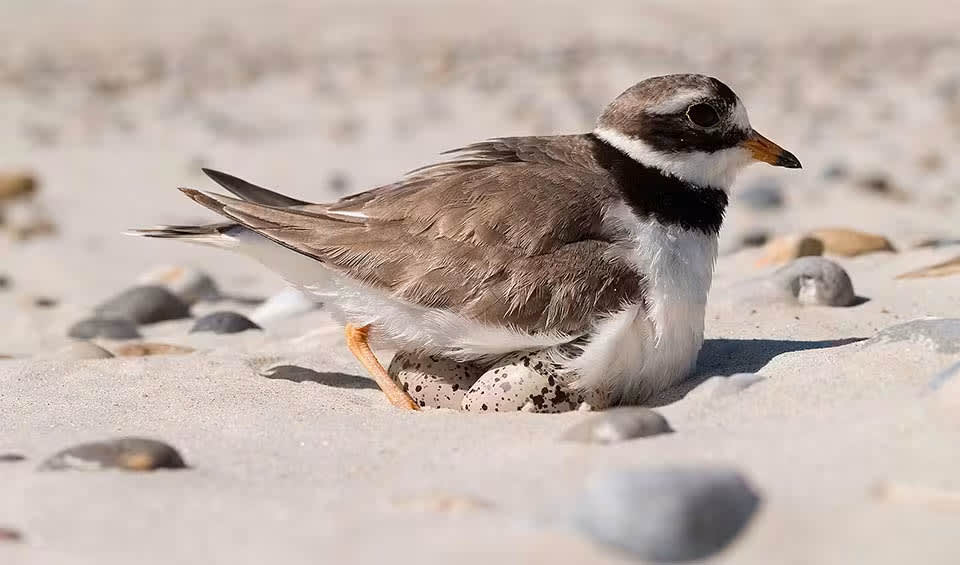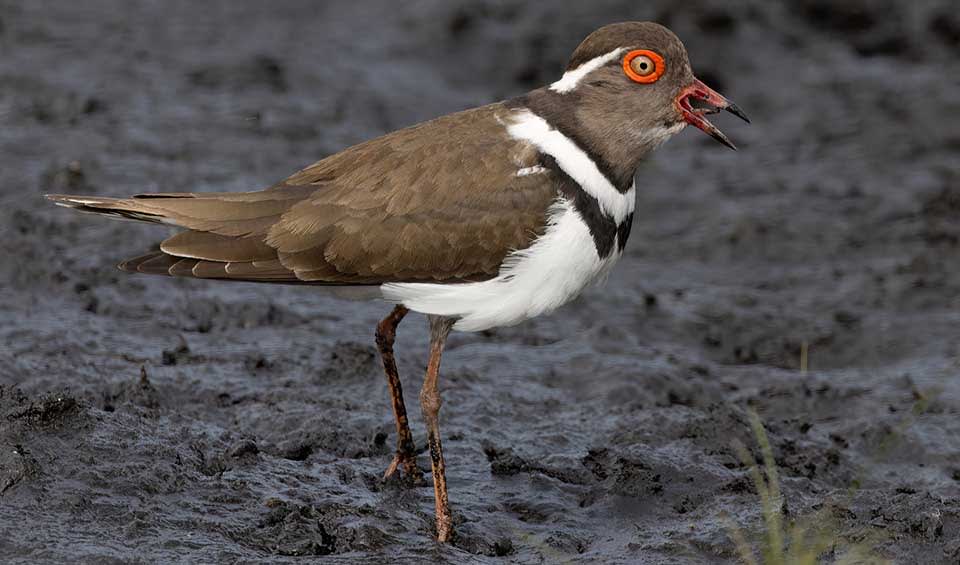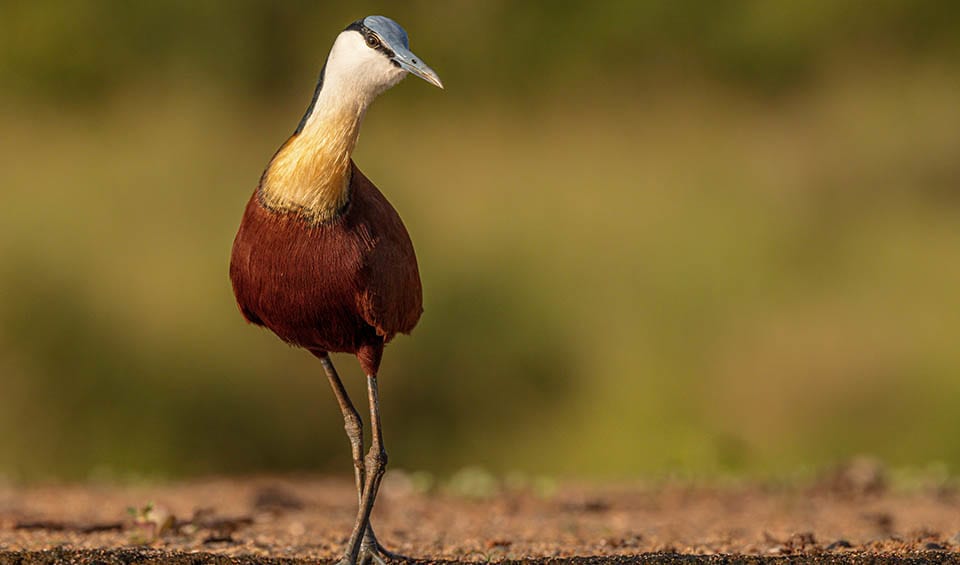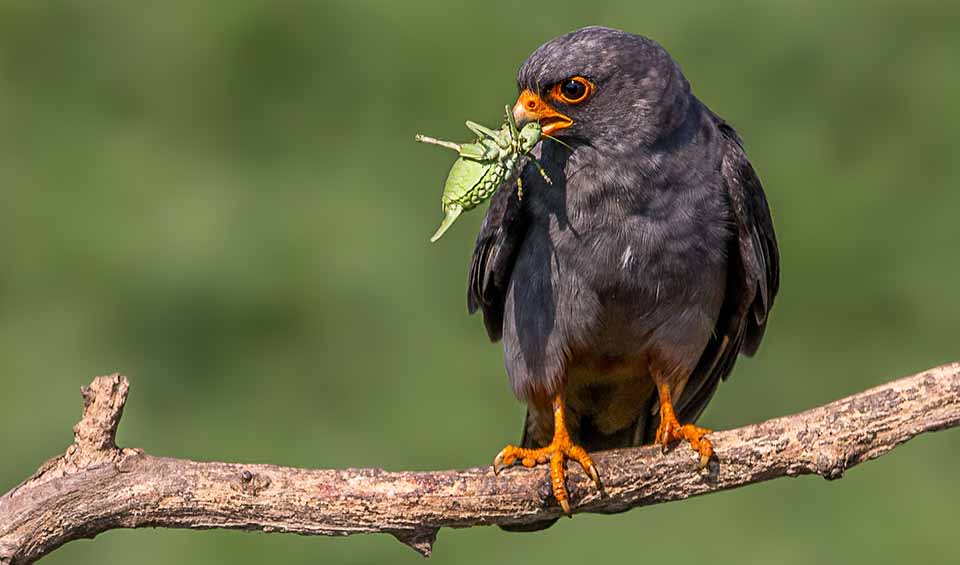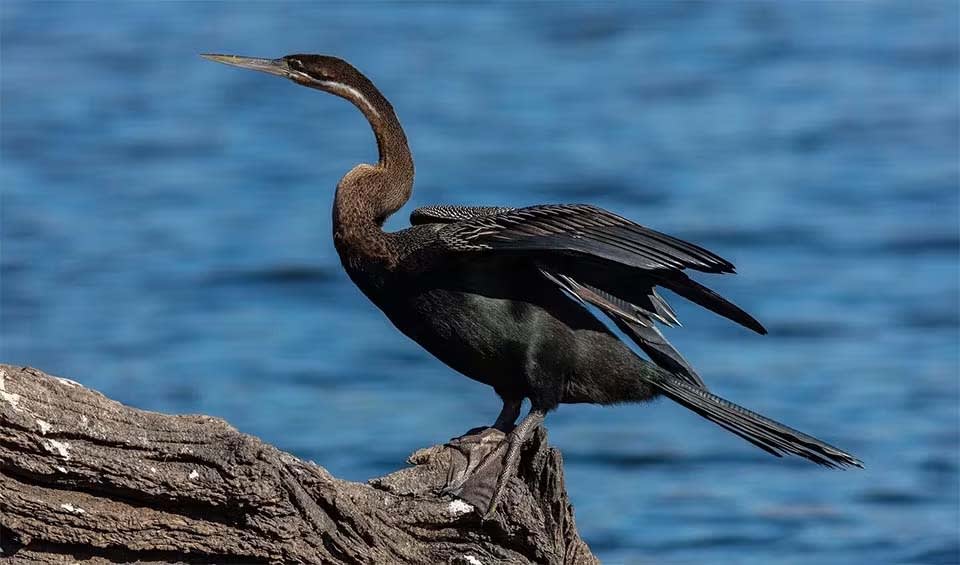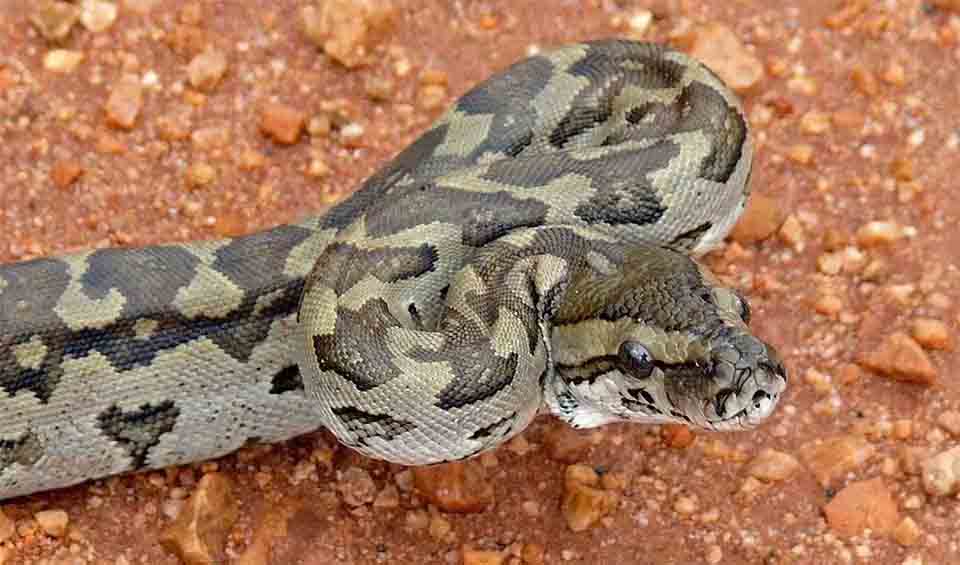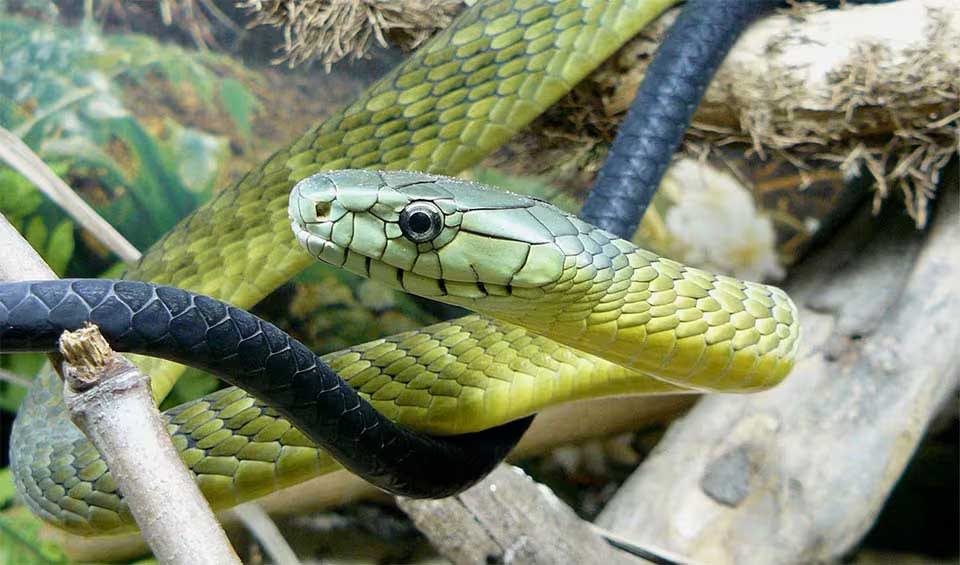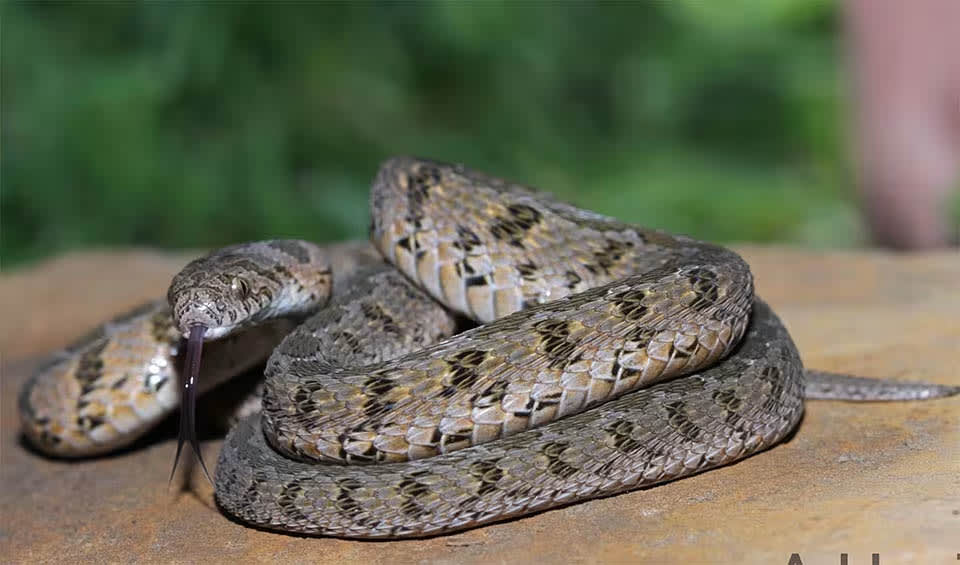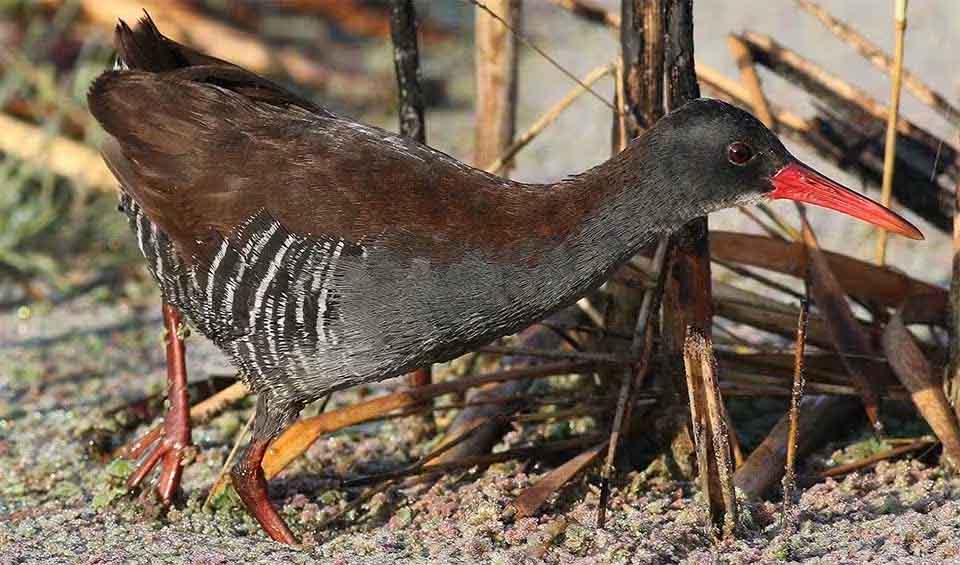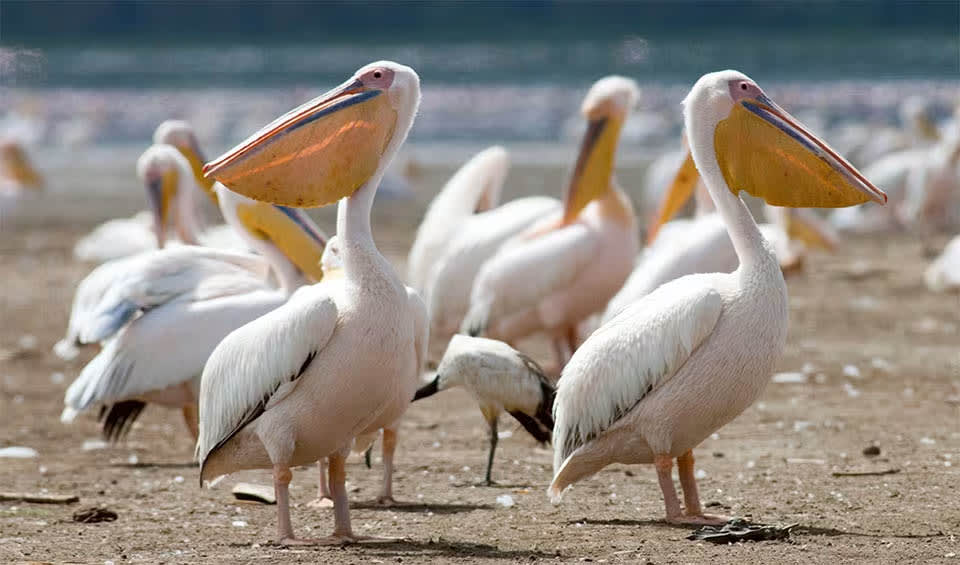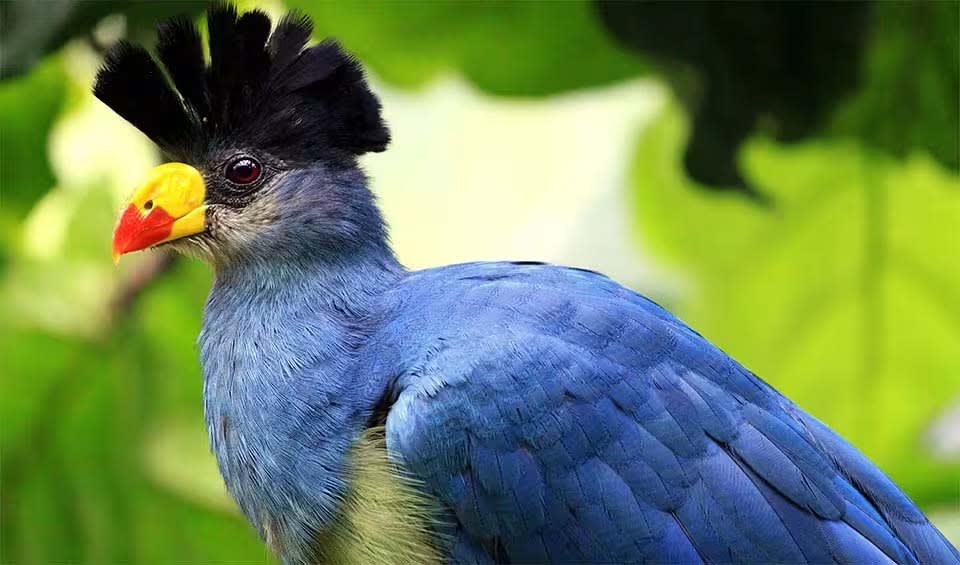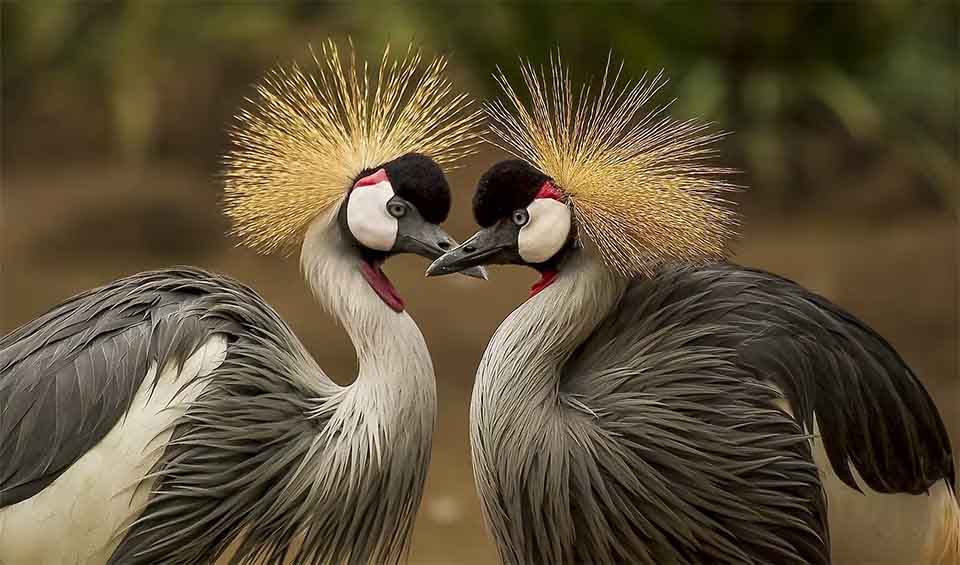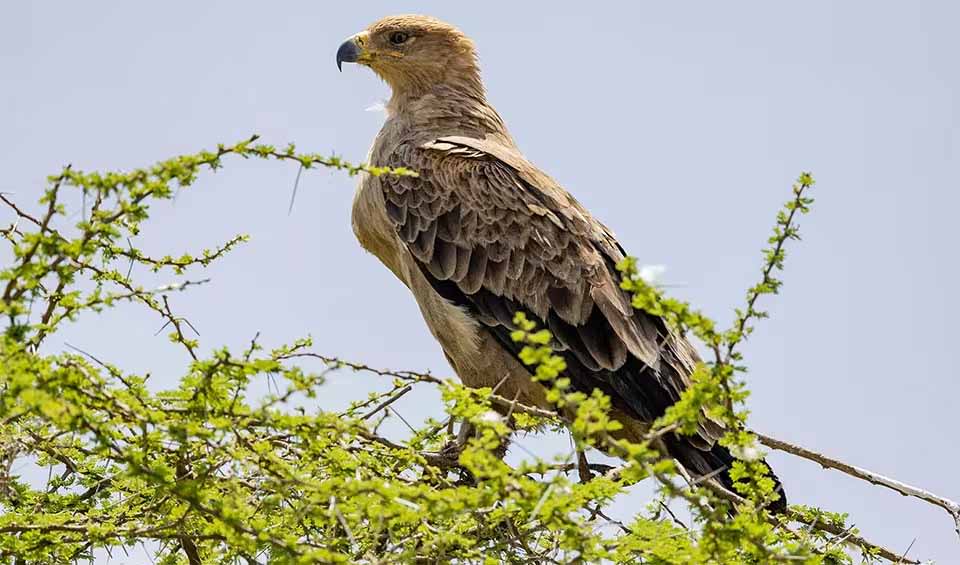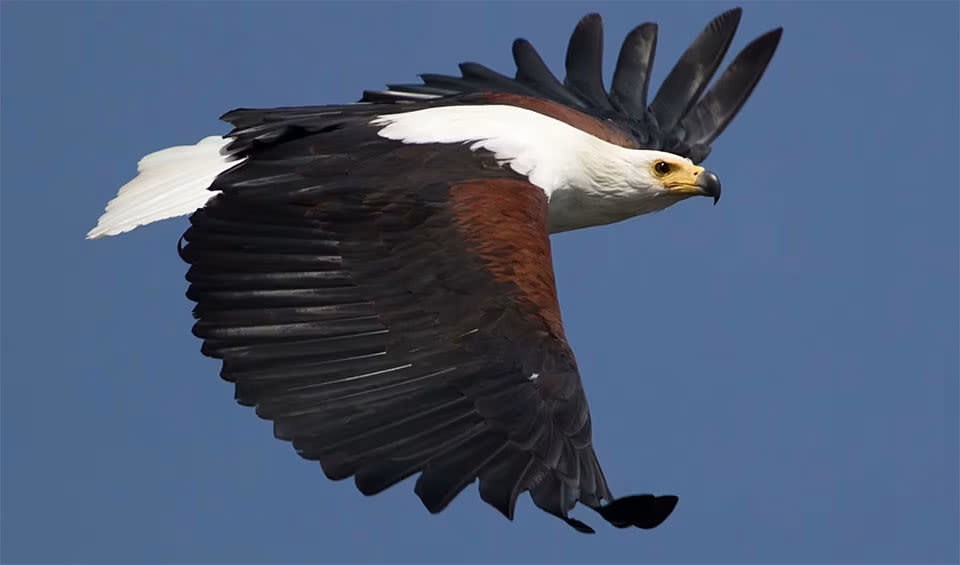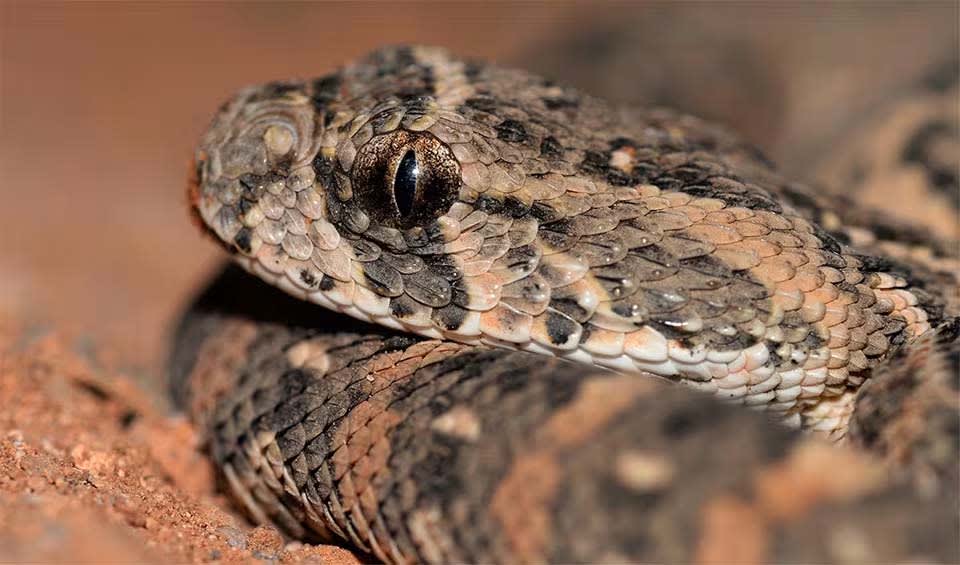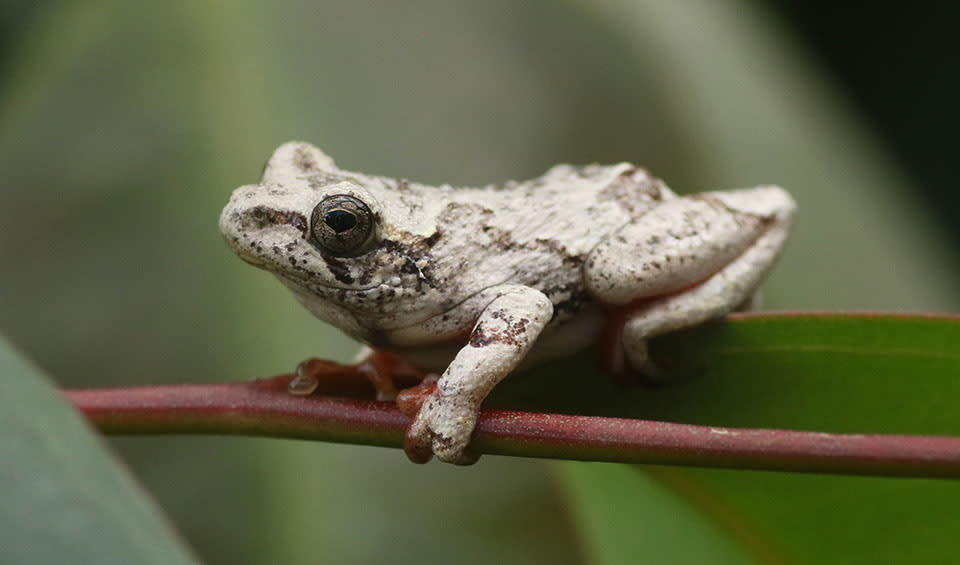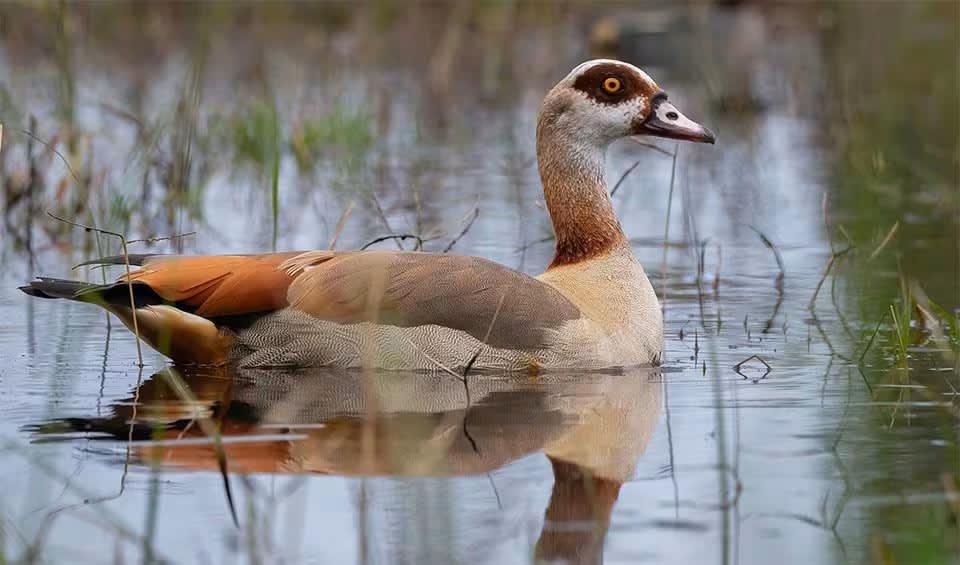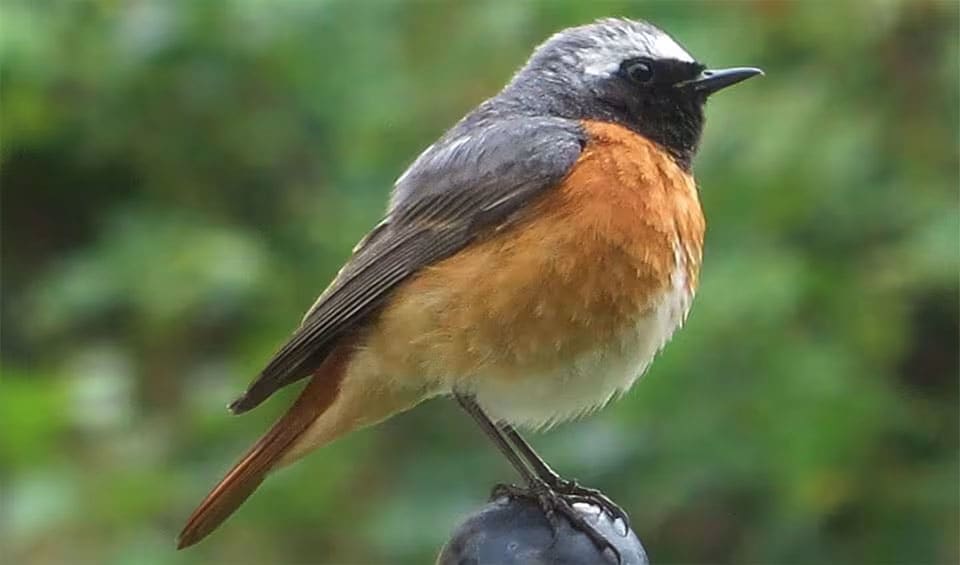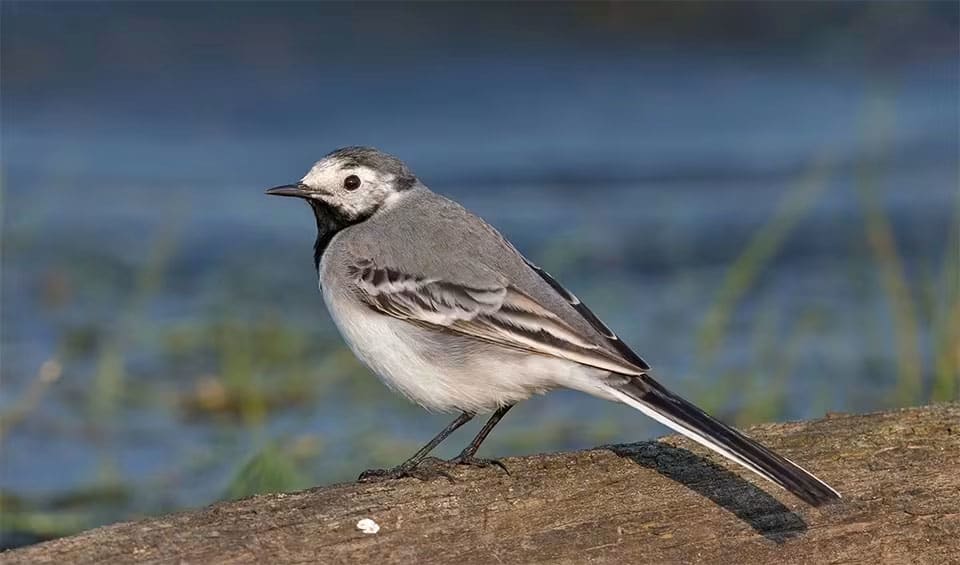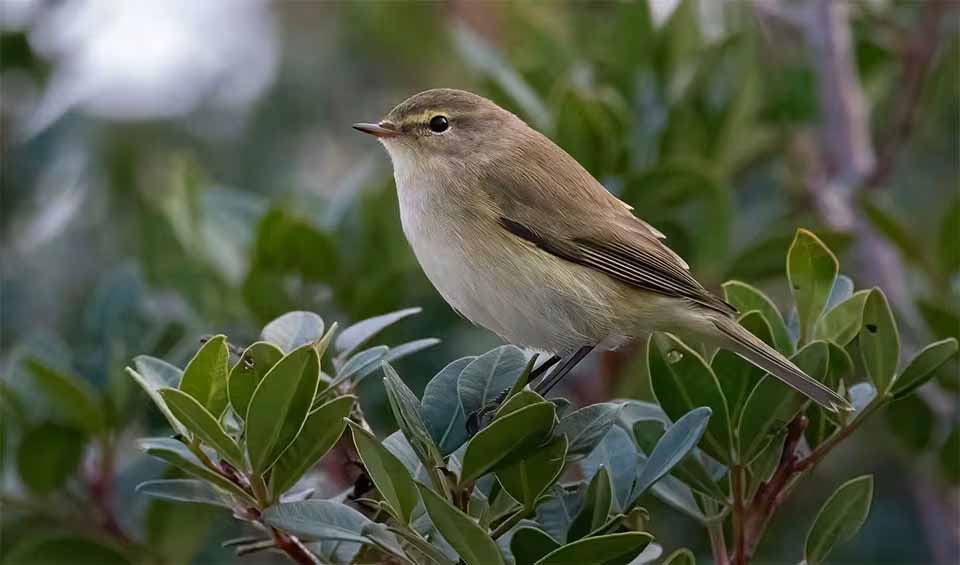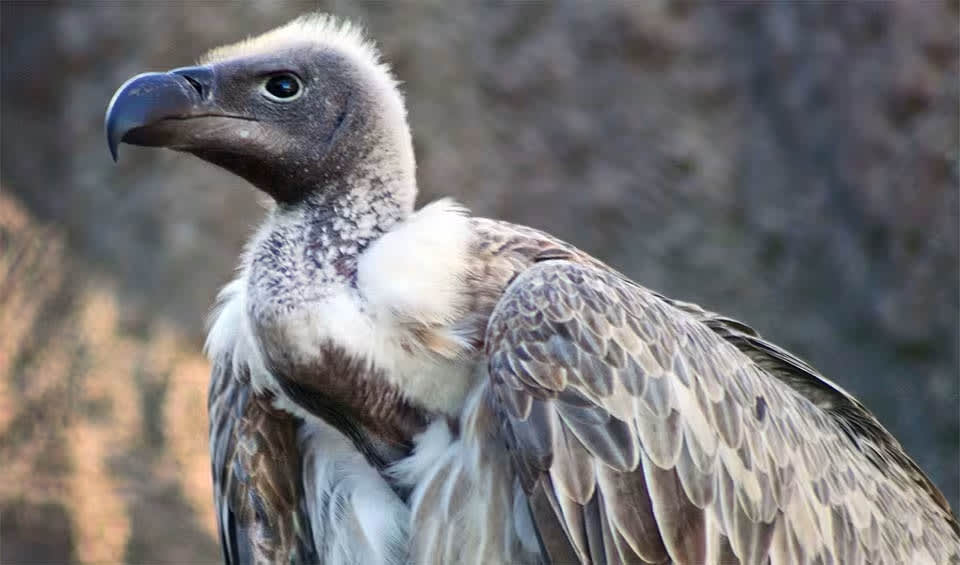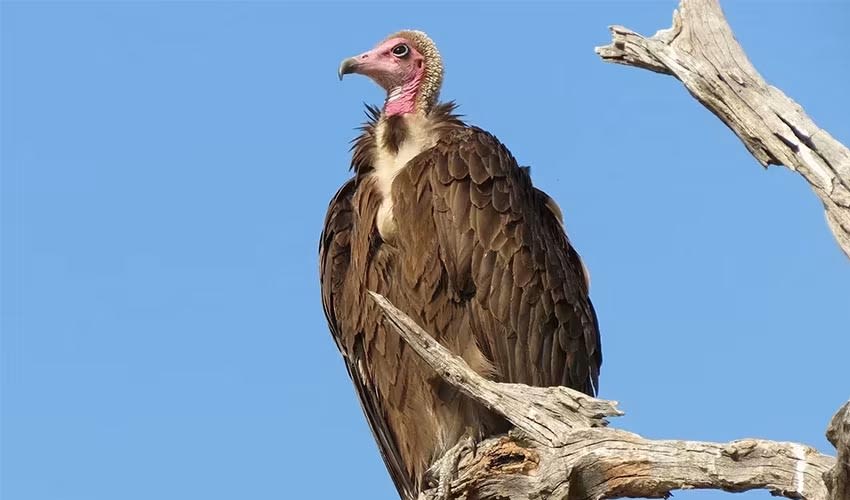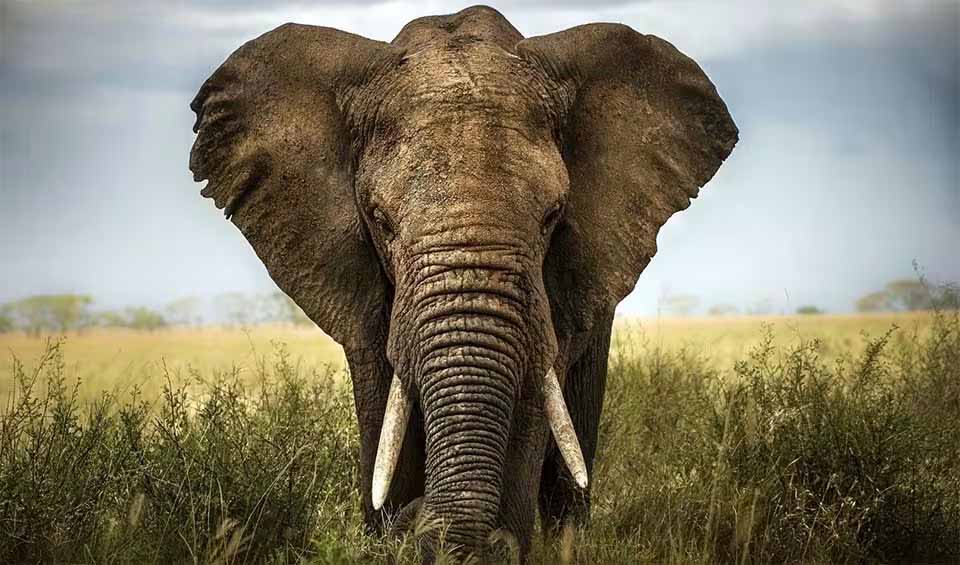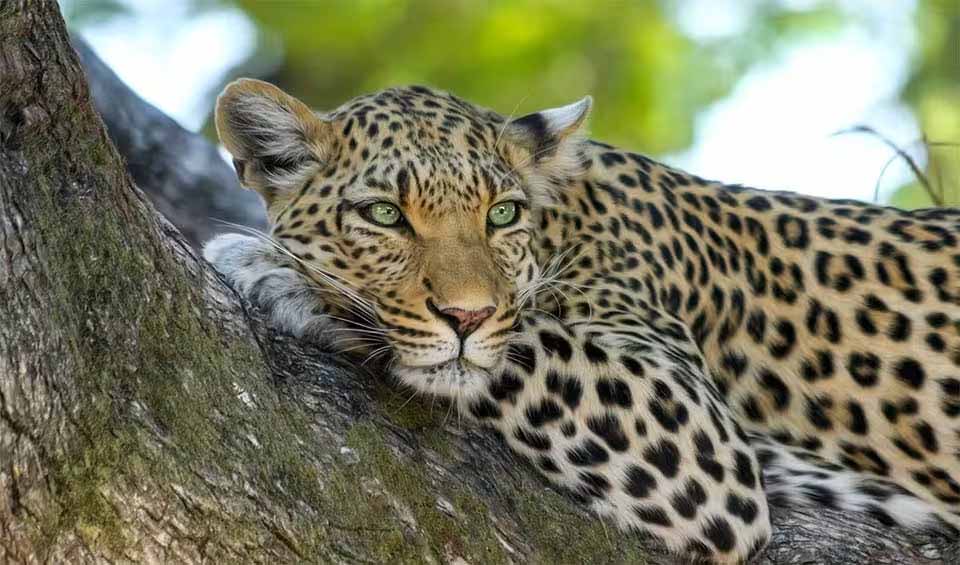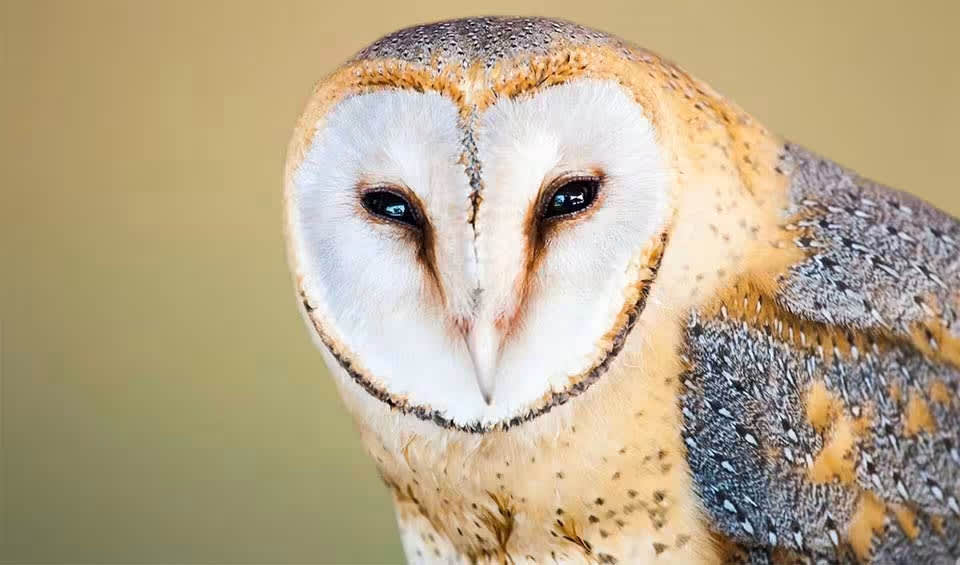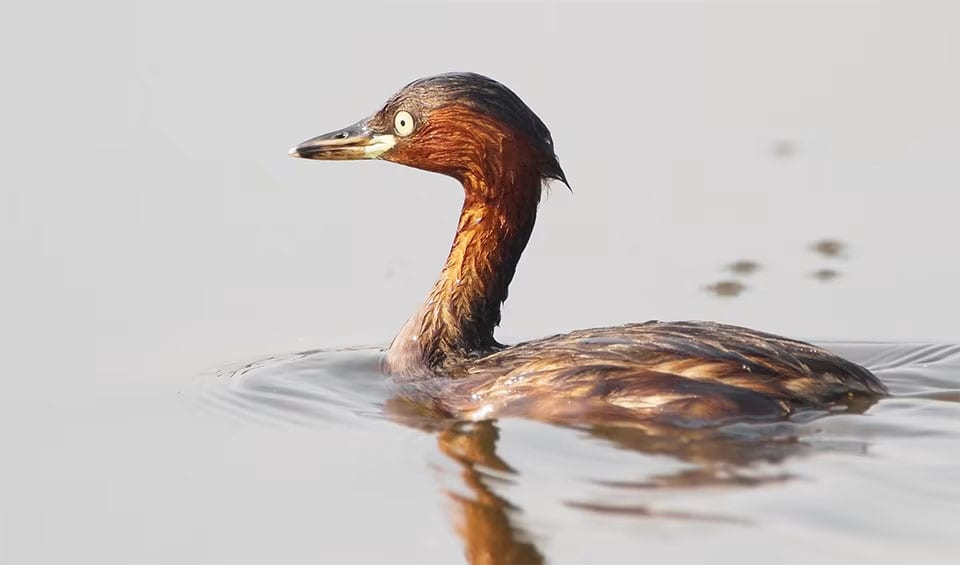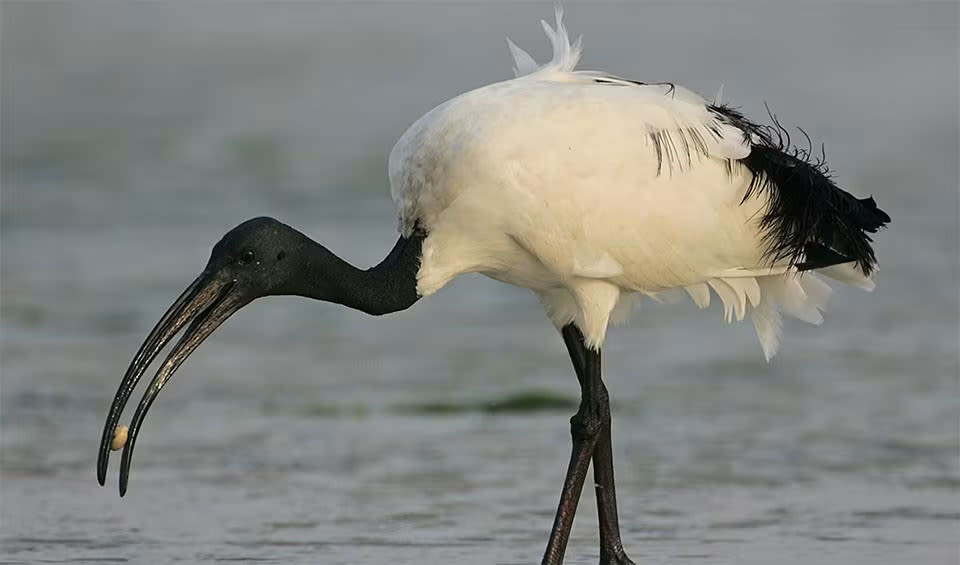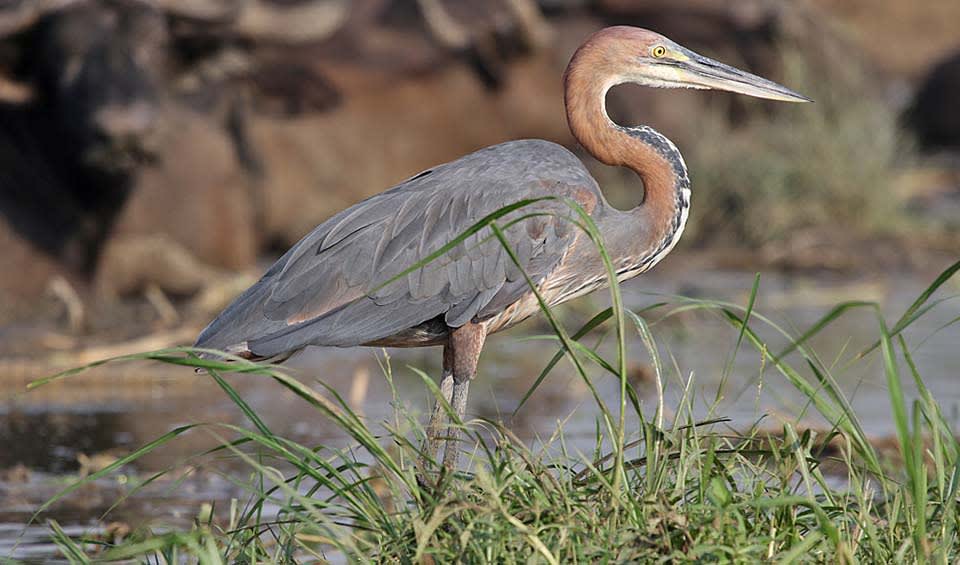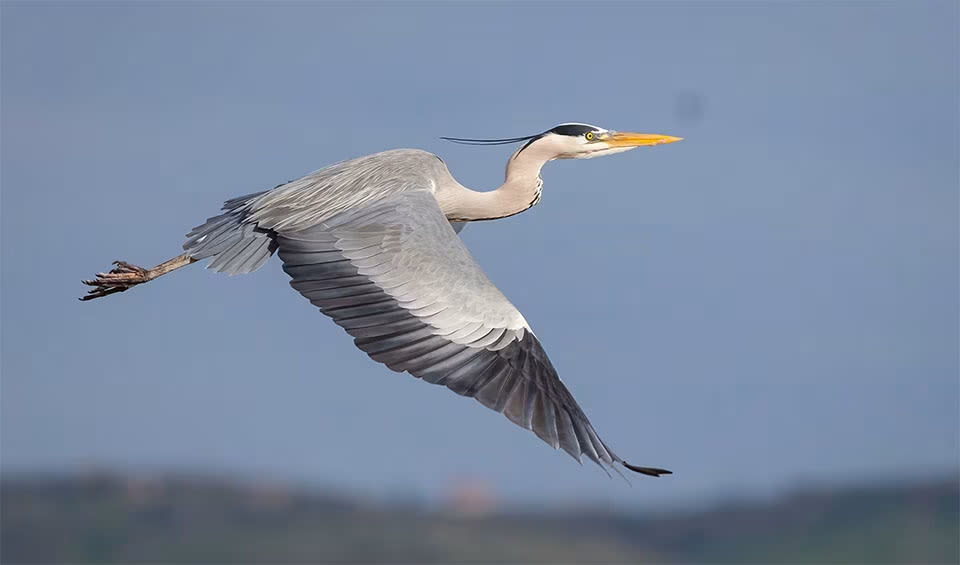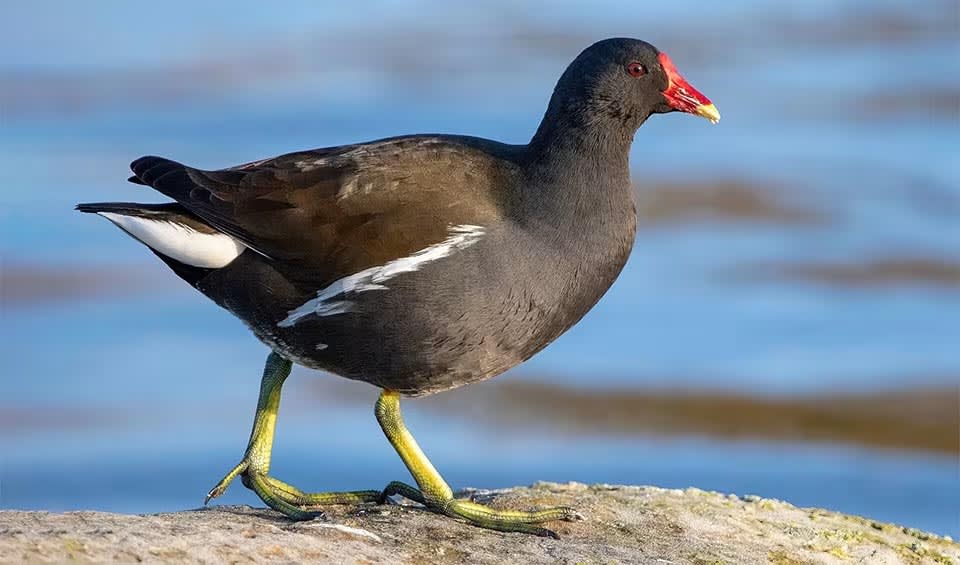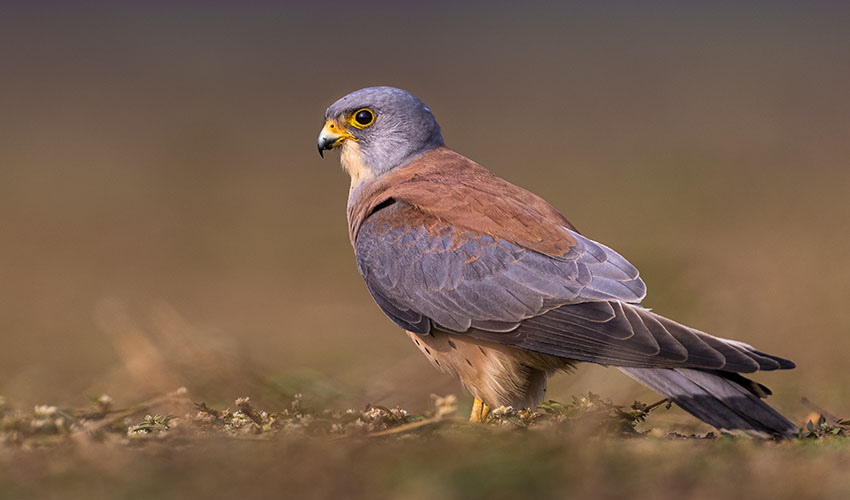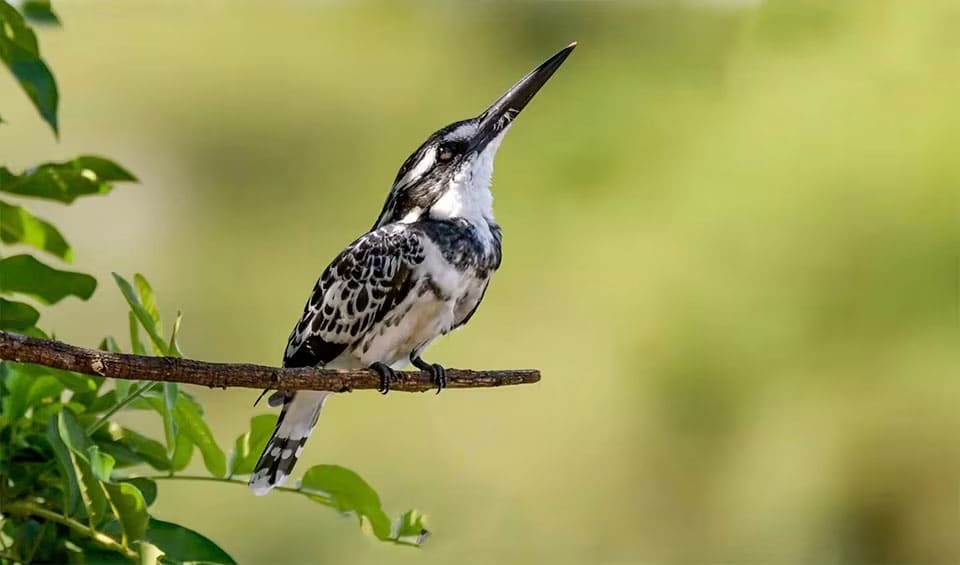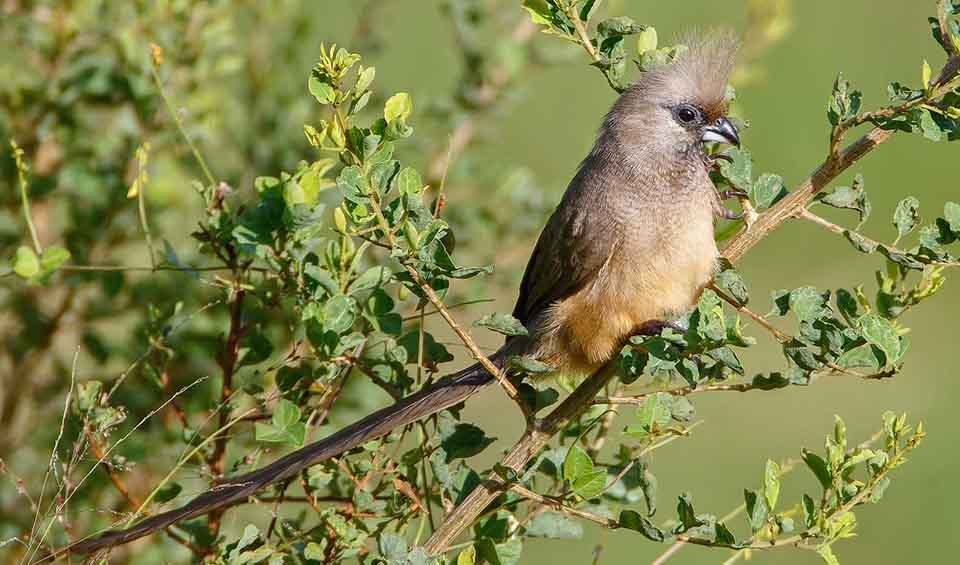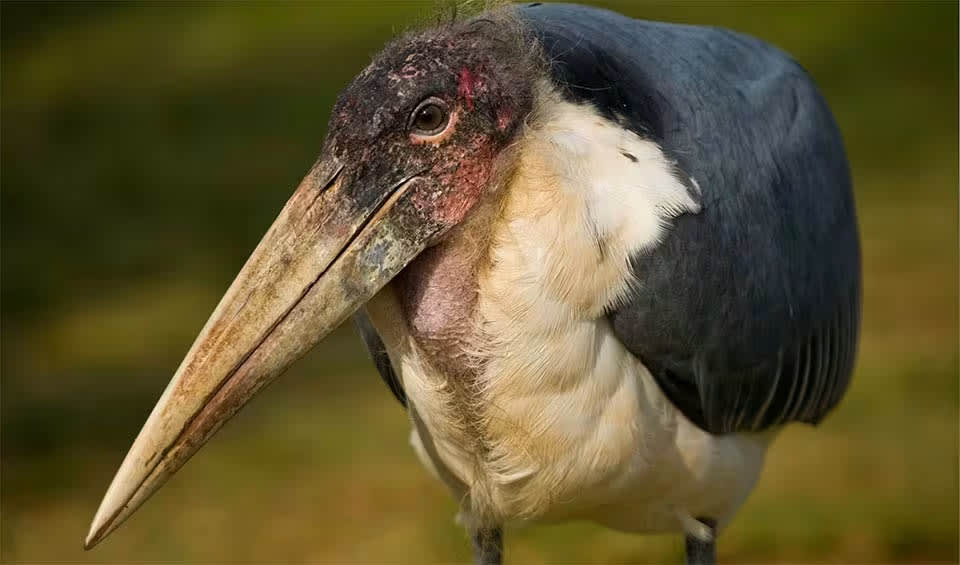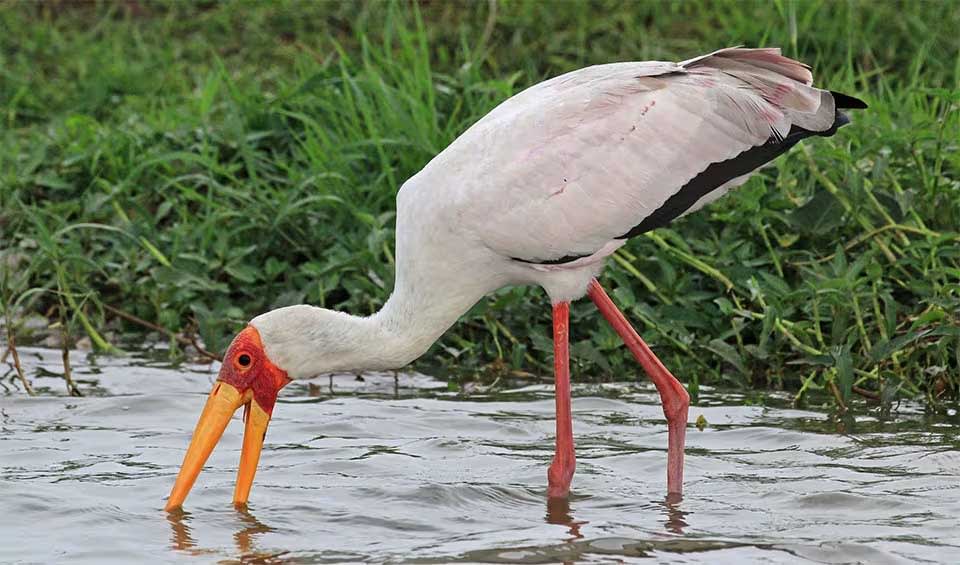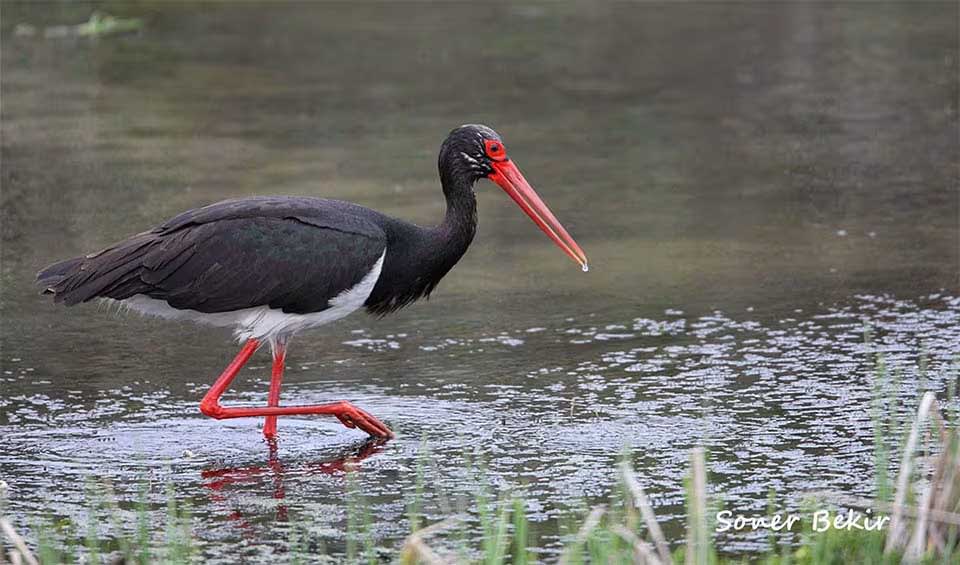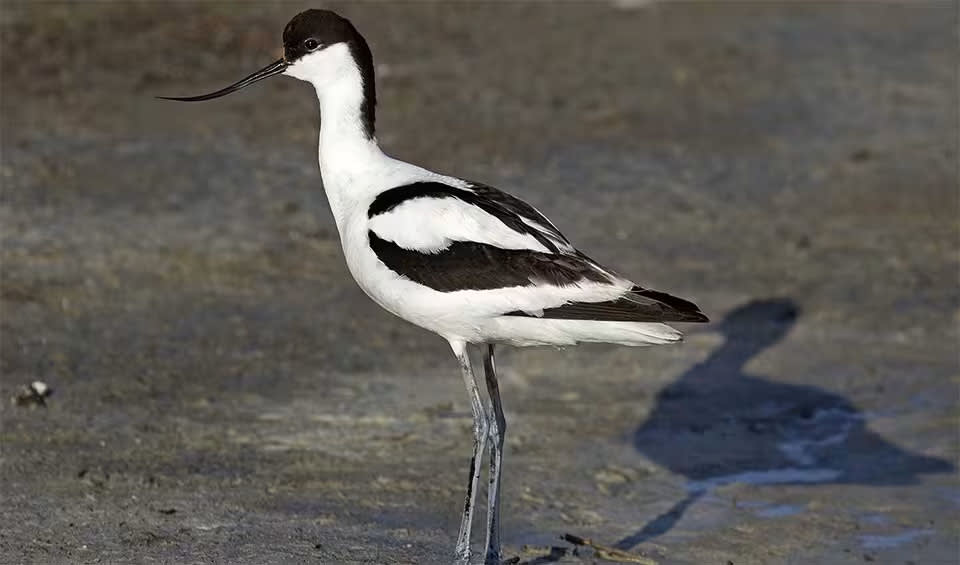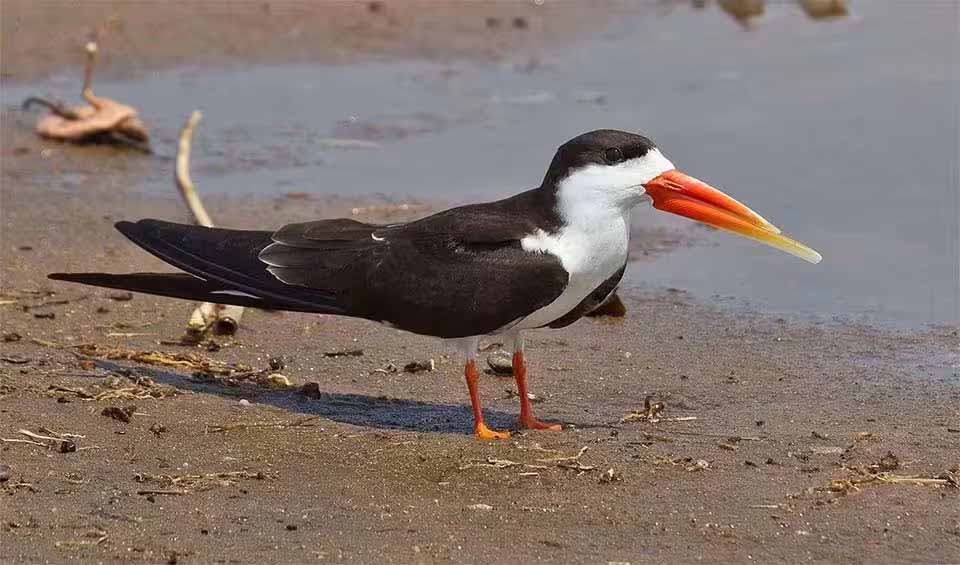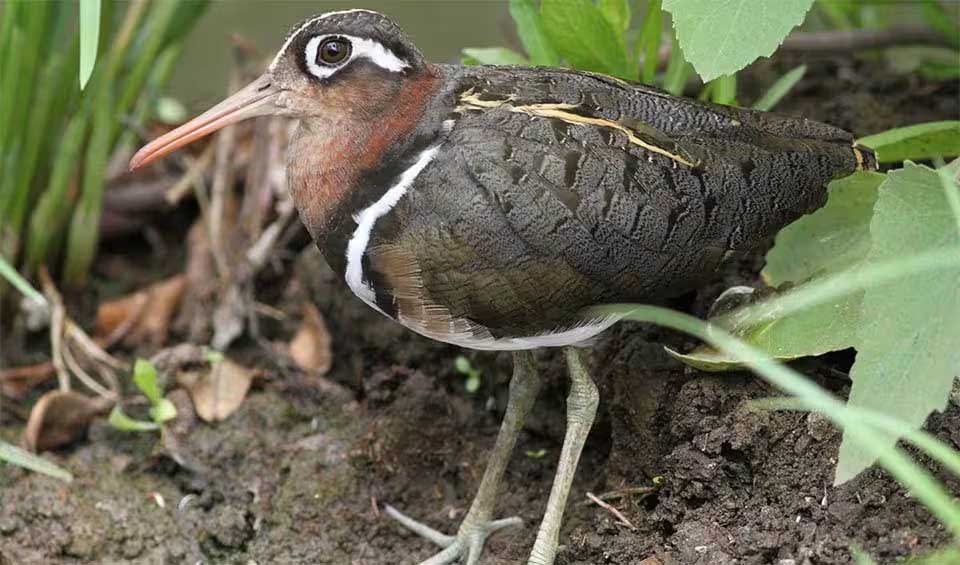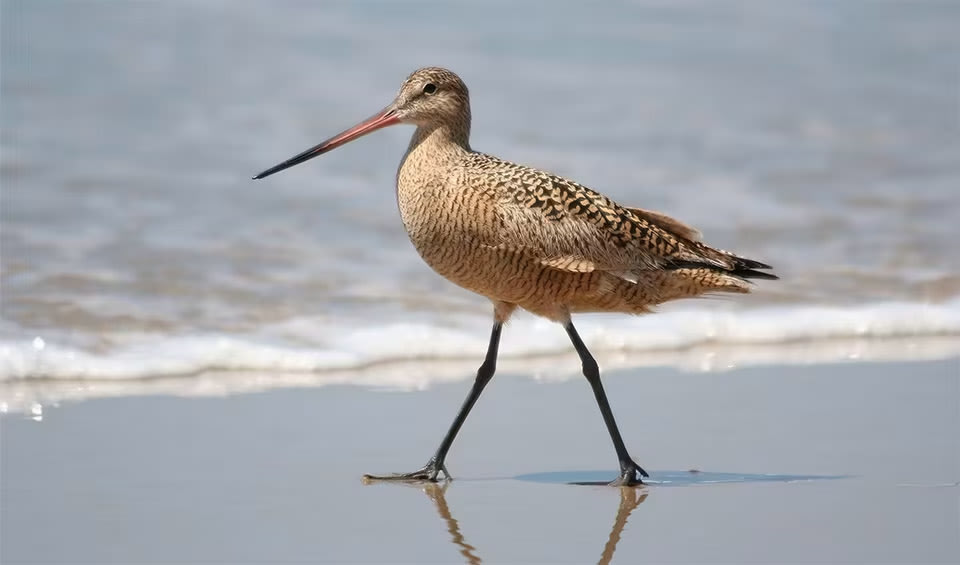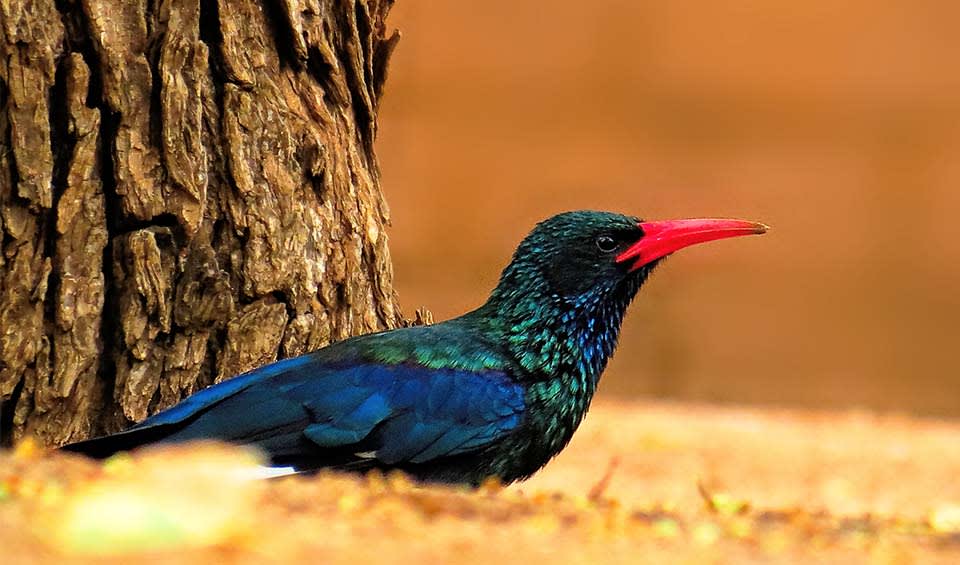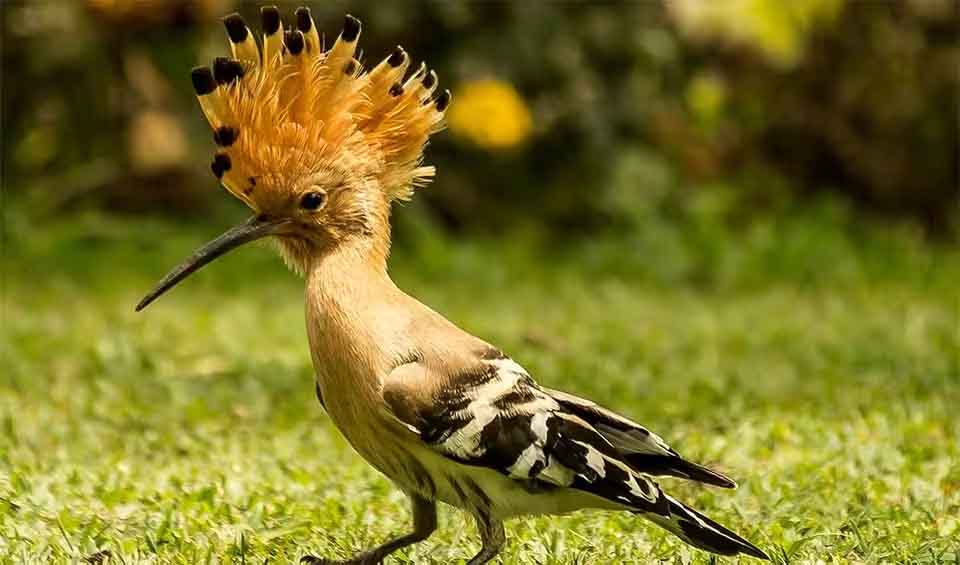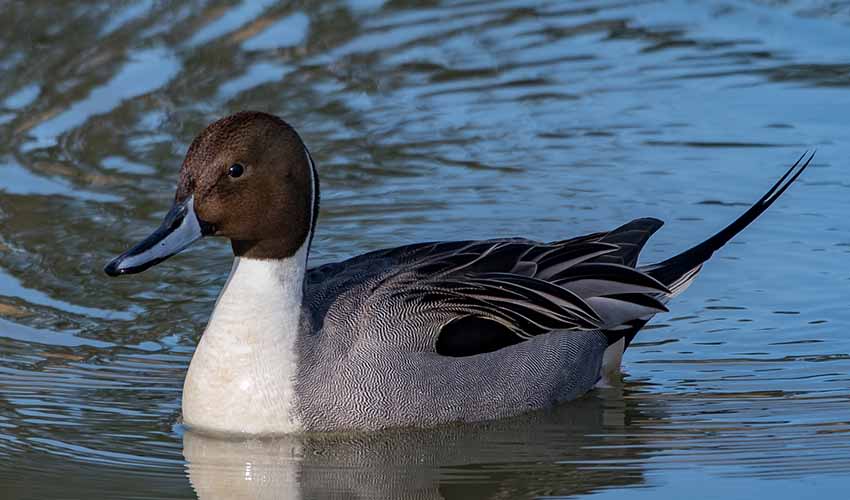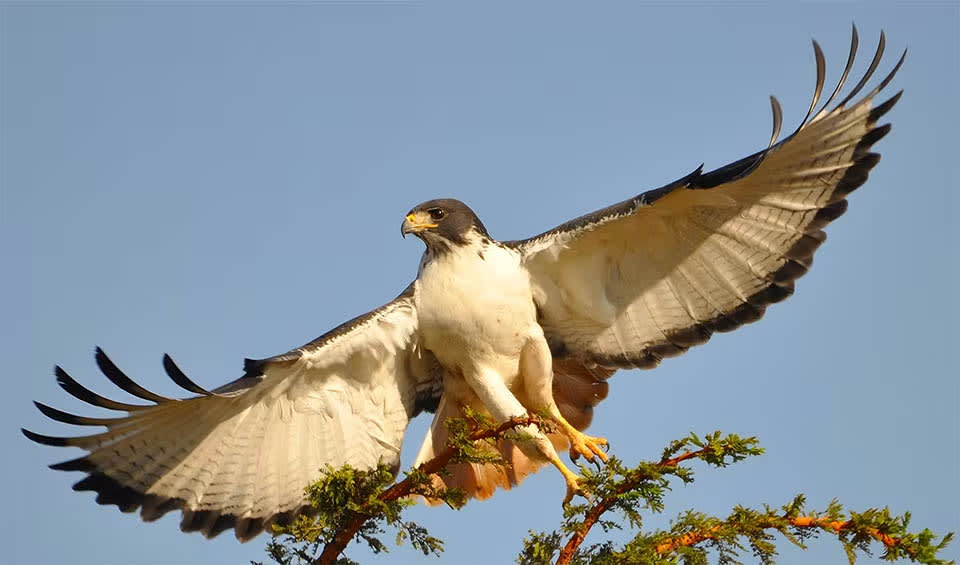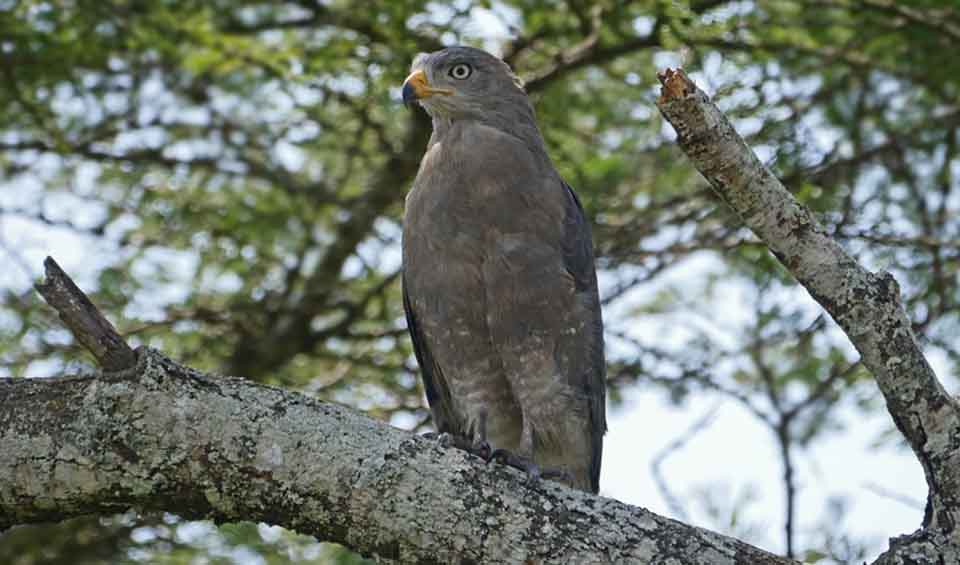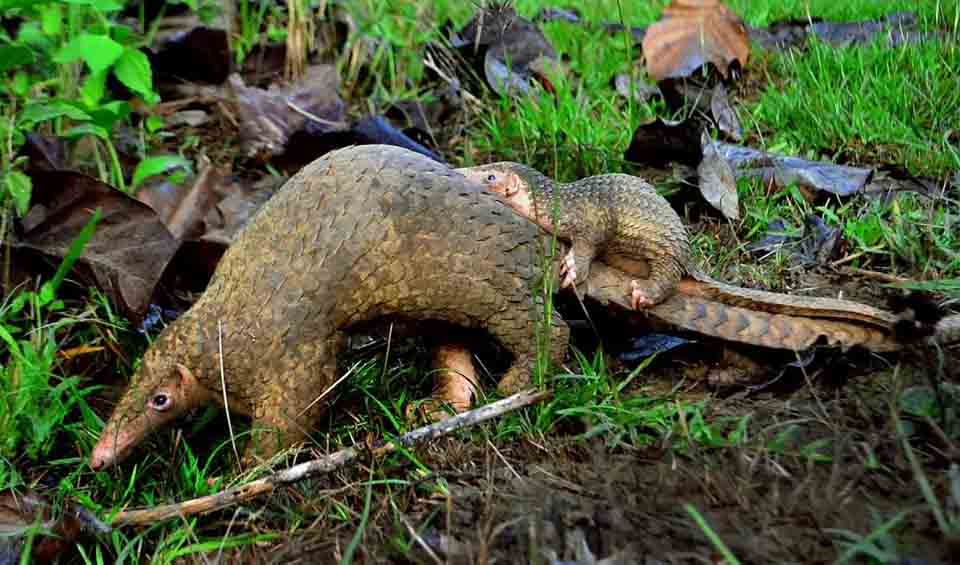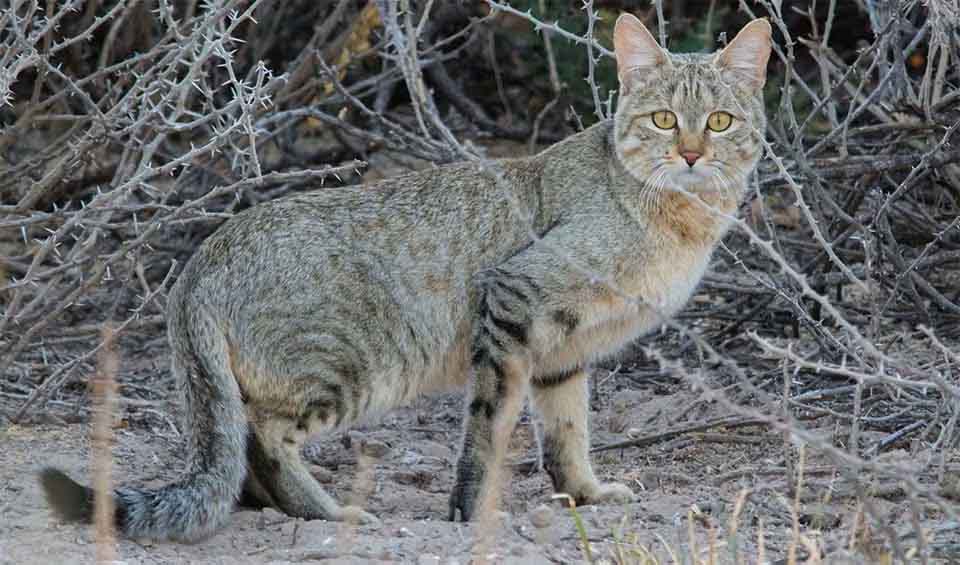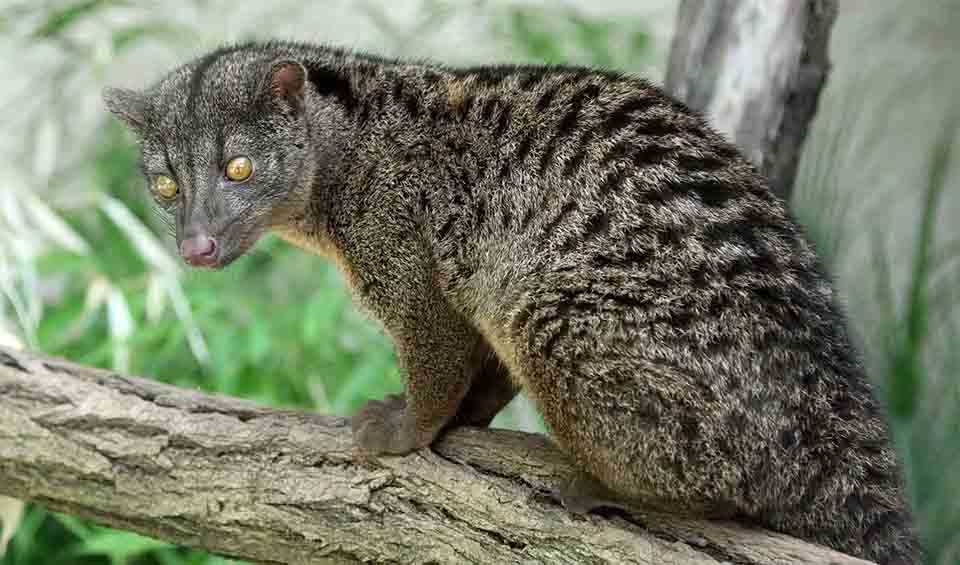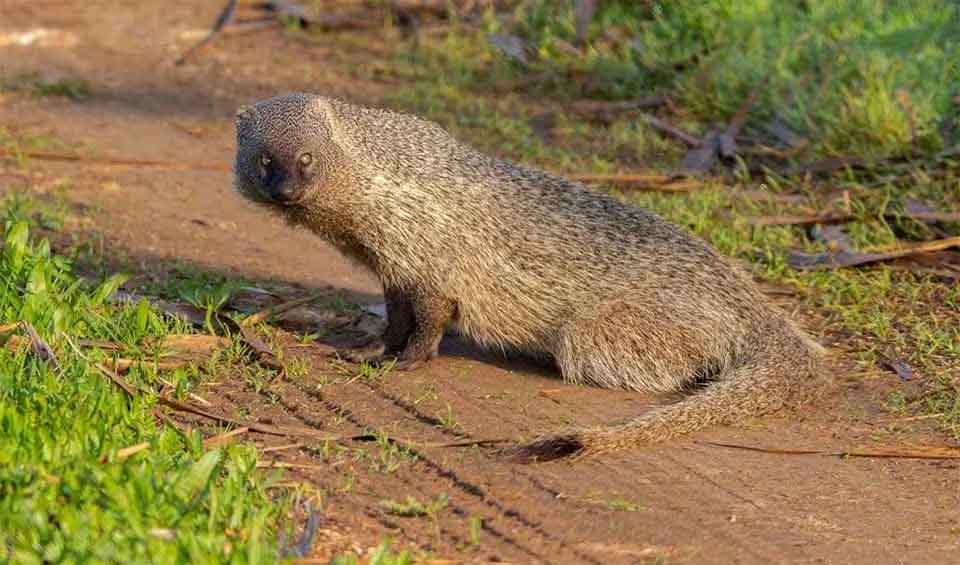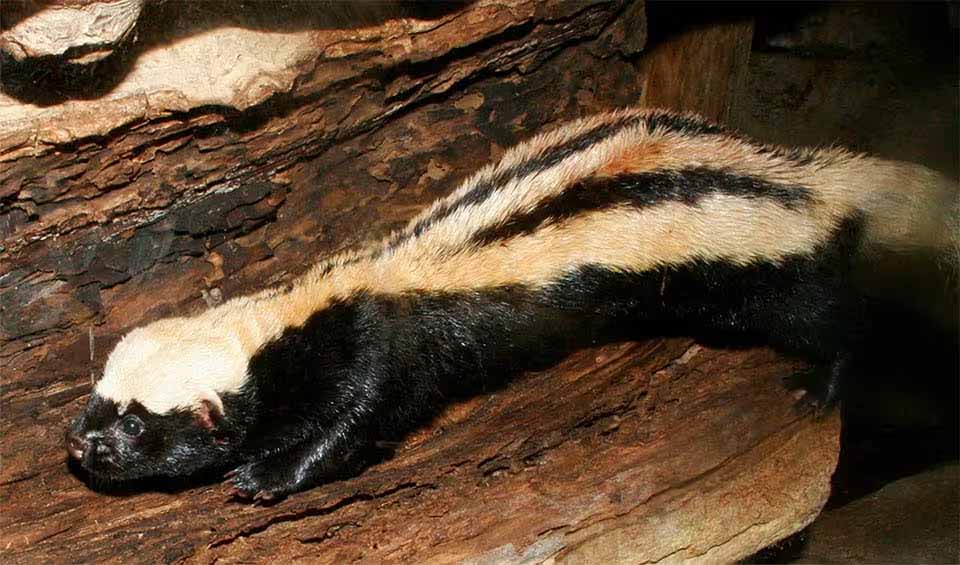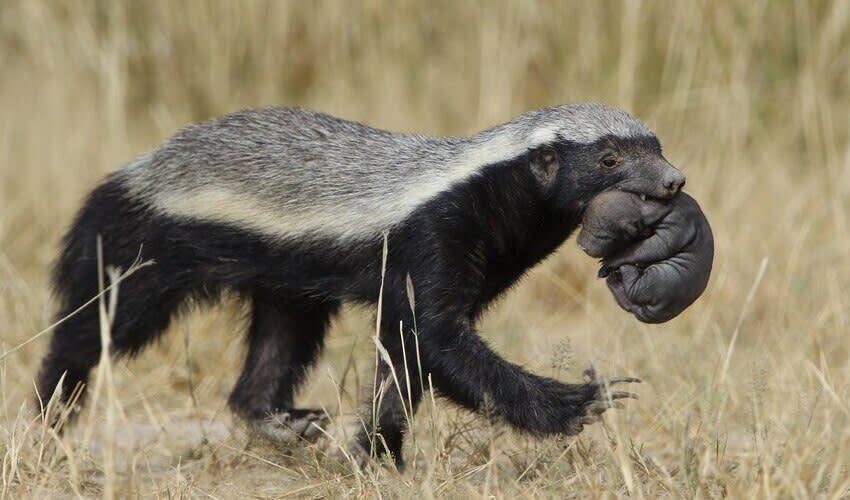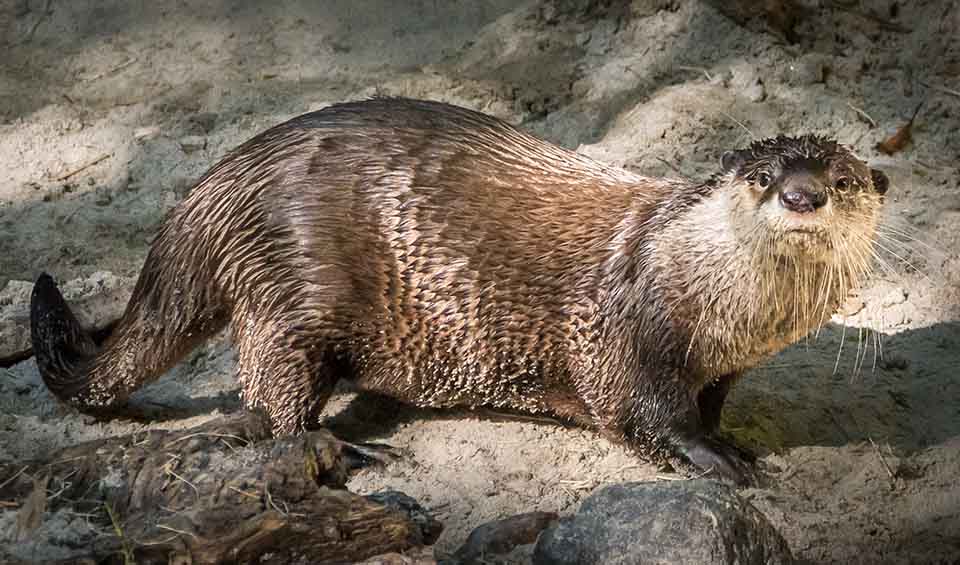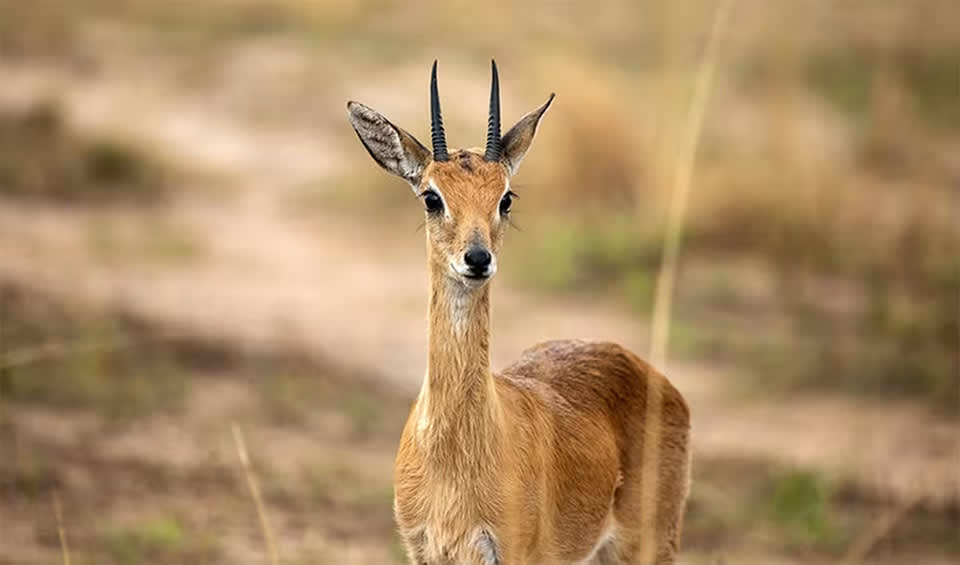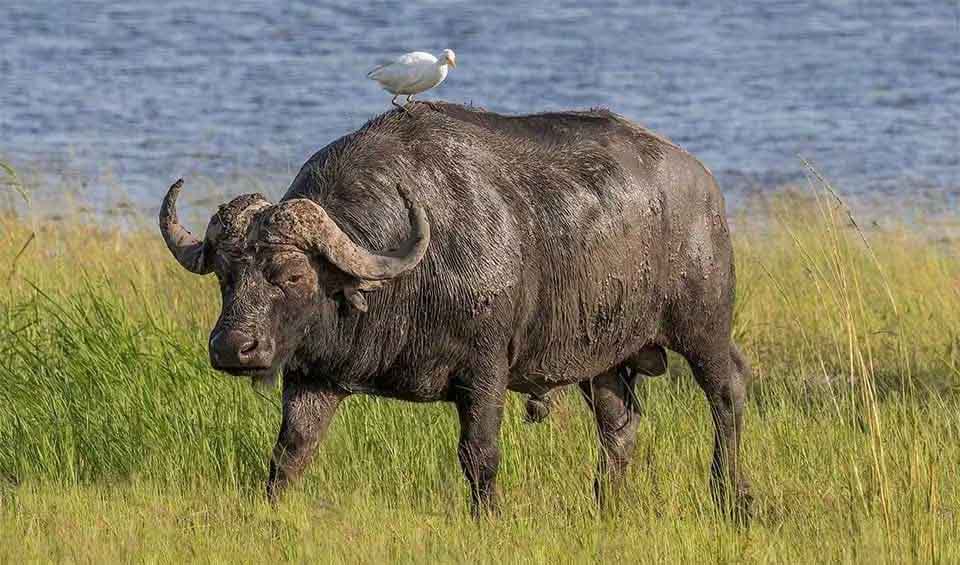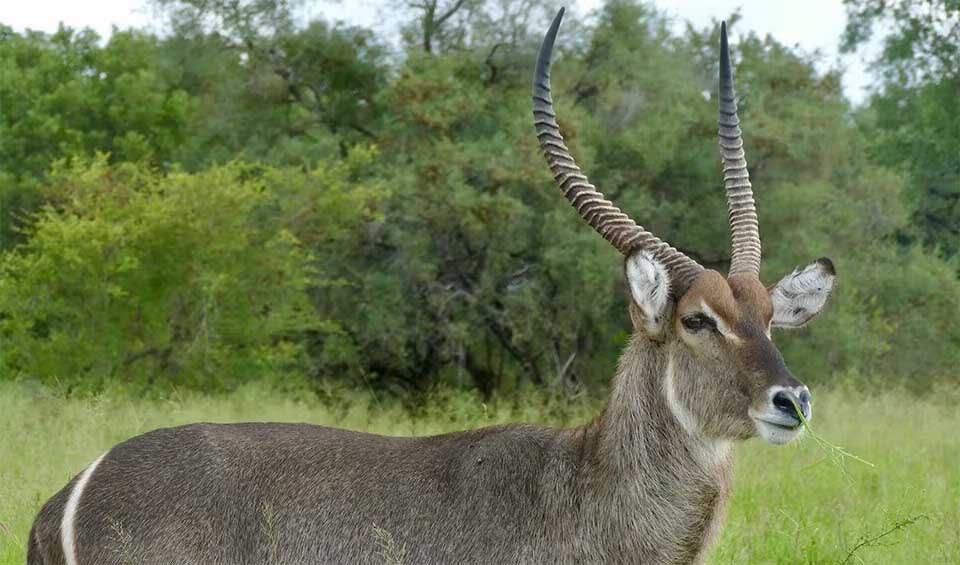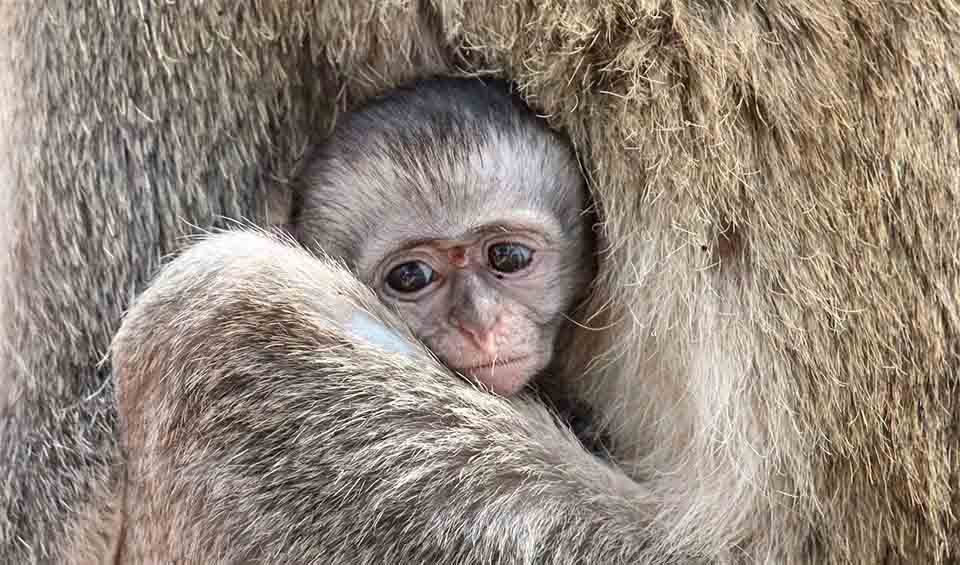Search for Rwanda
Grey plover
Can be black, can be grey but it’s the same bird
Bar-tailed godwit
Has one of the longest nonstop flights ever recorded for any bird
Eurasian curlew
Has the longest bill of any wading bird
White-backed duck
Even though it’s called the “white-backed”, you often can’t see the white!
Marsh mongoose
One of their favorite foods is freshwater crabs
Rusty-spotted genet
Looks like someone crossed a cat, a ferret, and a tiny leopard, then stretched it out and added an extra-long tail
African striped ground squirrel
Can hold their bushy tail over their back to shield themselves from the sun
Forest giant squirrel
One of the biggest squirrels in Africa—making it nearly the size of a small cat!
L’Hoest’s monkey
Its bright white throat patch looks like a fluffy beard — giving it one of the most distinctive faces in the monkey world
Yellow-backed duiker
It’s the biggest duiker of them all!
Black-fronted duiker
Often hang out under trees where monkeys feed, waiting for fruit to fall from above
Lesser spotted eagle
Frequently hunts from a low perch, dropping quietly on prey rather than making long chases
Caspian tern
A heavyweight champ — elegant, yes, but you don’t want to mess with that beak
Spotted bush snake
Extremely fast—able to disappear into foliage in the blink of an eye
Ugandan red colobus
Chimpanzee predation may account for up to 12% of annual red colobus deaths
Mauritian tomb bat
Has one of the most striking appearances of any African bat
Bat hawk
A sleek, fast-flying raptor that has mastered the art of hunting bats in midair
Bohor reedbuck
Poor jumpers—instead, they rely on speed and tall grass cover for safety
Spotted-necked otter
Can even pursue fish in tight underwater spirals, twisting and turning with remarkable precision
African savanna hare
A clever, athletic survivor, perfectly adapted to Africa’s open landscapes
Cape porcupine
The heaviest porcupines in the world, outweighing even their North American cousins
Greater cane rat
A large, tough rodent that frustrates farmers but also feeds families
Sand martin
A bird that carries the rhythms of the seasons on its wings
Booted eagle
Despite its small frame, this eagle can take prey almost as large as itself
Pallid harrier
Local birdwatchers sometimes call it the “silver ghost of the grasslands”
Laughing dove
One of the most charming doves you’re likely to encounter
Bushpig
They love mud baths, wallowing not only to cool off but also to protect their skin from parasites
Giant forest hog
Exactly what its name suggests—the largest wild pig in the world
Four-toed elephant shrew
Despite their mouse-like appearance, they’re closer relatives to elephants, aardvarks, and manatees than to rodents!
Natal dwarf puddle frog
Nicknamed “the quacking frog”, since it really does sound a bit like a tiny duck
Senegal bushbaby
If you shine a light into the trees at night, their eyes can shine back like tiny orange or red marbles
Western forest centipede-eater
A tiny, unassuming reptile that takes on prey many times tougher than itself
Ruff
Looks ordinary—but transforms into one of the most extravagant birds during breeding season
African common toad
One of the most widespread and adaptable amphibians across sub-Saharan Africa
Rüppells vulture
Once found flying 11,300 meters (37,100 ft) high, sadly, this was more of an accident than a discovery
White-bellied pangolin
Its tail is strong enough to hang it upside down while it feeds, like a tiny armored acrobat
Pel’s fishing owl
Doesn’t care about rodents or birds — it’s all about the fish, frogs, and aquatic snacks
Reed cormorant
Despite its short stature, it’s a strong and fast flier
Long-crested eagle
Got a long, floppy crest of black feathers sticking up from the back of its head like a windblown mohawk
Palm-nut vulture
Carrion? Nah, I prefer coconuts
Red-legged sun squirrel
Not your backyard nut hoarder
Common duiker
And they live up to the name — these little antelopes are known for diving headfirst into thickets when spooked
African green pigeon
Despite being brightly colored, they’re hard to spot — they sit quietly in treetops, perfectly camouflaged among leaves
African harrier-hawk
Has double-jointed ankles that let it bend its legs backward, forward, and sideways
Flap-necked chameleon
Its tongue can shoot out up to twice its body length in a fraction of a second
African grass rat
They don’t live alone—colonies can have multiple burrows connected like a mini rodent village
Black crake
They’re always close to the reeds, but just bold enough to be seen
Martial eagle
One of Africa’s largest and most powerful birds of prey—a true apex predator of the skies
Knob-billed duck
Males sport a big, bumpy black “knob” on top of their bill — like a bird-sized bike helmet
Freckled nightjar
Camouflage game: legendary
Ruddy turnstone
They flip the script — literally!
Klipspringer
Natural-born climber, capable of leaping with incredible agility across steep cliffs and boulder-strewn slopes
African paradise flycatcher
Its call—a soft, sweet “chee-chee” or chattering trill—can often be heard before the bird itself is seen
Red-lipped snake
Mildly venomous and completely harmless to humans
Common slender mongoose
Can take on a cobra with nothing but speed and confidence
Coarse chameleon
Not aggressive — but expressive!
Little sparrowhawk
The fun-sized falcon of the forest, but with all the attitude of a full-grown eagle
White-necked raven
They are, without a doubt, some of the smartest and most entertaining birds out there!
Leopard tortoise
Famous for its beautiful, patterned shell that resembles the spotted coat of a leopard
Black-and-white-casqued hornbill
Its big casque works like a built-in speaker, boosting their calls to echo powerfully across dense forests
African grey hornbill
One of the more subtly beautiful members of the hornbill family
Crowned hornbill
Have sharp eyesight and are known to mob snakes they spot near their nests
Crested barbet
A tiny bird with a voice, and style, far bigger than its size
Giant kingfisher
Africa’s largest and most powerful kingfisher
Hadada ibis
Natural alarm clocks in African cities — whether you want them or not!
Grey-headed kingfisher
Despite the name, it rarely goes fishing!
Roan antelope
One of Africa’s most majestic and powerful antelopes, known for its robust build and horse-like stature
Black-crowned night heron
One of the most widespread and adaptable herons in the world
Steppe eagle
The treasured bird of Saladin, the first Sultan of Egypt
Grey parrot
Often considered as the smartest of all parrots
Crowned eagle
Often called the “leopard of the sky”
Yellow-billed oxpecker
One of the few birds that feeds partly on blood—not in a harmful way
Cape bushbuck
Females hide their young and eat the feces after nursing them, so no trail of their scents remains to entice predators
Rhinoceros viper
Has a surprisingly calm temperament and rarely bites unless provoked or stepped on
Common ringed plover
This bird taps its feet to imitate rain to make the prey reach the surface
Forbes’s plover
Sometimes called the “dry country plover” because of its preference for inland habitats, unlike its more coastal relatives
Red-capped lark
Surprisingly photogenic, especially when the sun catches their reddish crown just right
Square-tailed nightjar
Their wide, gaping mouths might look a little odd, but they’re perfect for scooping up moths and beetles mid-flight
African jacana
Chicks are skilled swimmers and divers, able to paddle through the water just hours after hatching
Red-footed falcon
Their favorite snack? Large insects like locusts and dragonflies
African darter
African darters or ‘snakebirds’ are expert underwater fishermen equipped with stealth, diving skills, and a spear-like bill
Northern giraffe
Most endangered giraffe species is witnessing silent extinction
European roller
Loves trees! Only member of its family breeding in Europe
Central African rock python
Its sheer size and presence make it a dominant predator wherever it is found
Southern African rock python
Kills by constriction, ambushing and coiling around its prey, and tightening its coils every time the victim breathes out
Lesser black-backed gull
A common sight in coastal regions throughout the Northern Hemisphere
Jameson’s mamba
Unlike the black mamba, the deadliest snake in Africa, it is less aggressive and more likely to retreat when threatened
Owl-faced monkey
Sometimes called “ghost monkey” because of its secretive movements and haunting facial mask
Common egg eater
Has the incredible ability to swallow eggs that are much larger than its own head
White-faced whistling duck
Loud birds with a distinct three-note whistling sound
Bateleur
One of the easiest birds of prey to identify from a distance
African rail
Spend most of their time lurking in the thick reeds and grasses, only venturing out when they absolutely have to
Red-rumped swallow
Amazing flyers — they can even drink water while they’re flying!
Great white pelican
Underneath this colorful beak, there’s a hidden surprise – a built-in net for scooping up a delicious lunch!
Pink-backed pelican
Mostly pale grey or white, but when the light hits just right, you’ll see a rosy-pink blush across their back and wings
Barn swallow
Most common and widely distributed swallow globally
Lesser grey shrike
Have been observed remembering the locations of their impaled prey and even using tools to help them catch food
Great blue turaco
A bird as big as a crow but with feathers that shimmer an unbelievable shade of blue
Giant pangolin
Covered in tough, overlapping scales made of keratin — the same material human fingernails are made from
White-crowned lapwing
Known to nest surprisingly close to crocodiles!
Grey crowned crane
It holds significant cultural and spiritual importance in African cultures, often associated with wisdom, longevity, and good fortune
Tawny eagle
Often seen as a symbol of strength, freedom, and keen vision in many African communities
African fish eagle
With its striking appearance and distinctive call, it is often referred to as the “voice of Africa”
Boomslang
Itd name means “tree snake” in Afrikaans and Dutch, a fitting description of its arboreal lifestyle
Puff adder
Notoriously grumpy, always putting on a dramatic hissy fit when approached
Common reed frog
Their horizontal pupils give them a permanently surprised expression
Little egret
During breeding, they transform with elegant white plumage, adorned by decorative plumes on the head, neck, and back
Egyptian goose
They were commonly depicted in art from ancient Egypt
Eurasian blackcap
The males, in particular, produce a rich and intricate song that contributes to their charm
Common redstart
They consistently display a restless demeanor and exhibit a distinctive, tail-trembling behavior
White wagtail
Holds cultural symbolism in some societies, representing good luck
Eurasian kestrel
Adaptable raptor known for its hovering hunting technique and striking appearance
Common chiffchaff
Their migratory behavior is often linked to the availability of insects for food
African openbill
An unrushed flyboy from Africa
Nile monitor
Can deliver a painful bite, tail lashes, and fierce scratches — definitely a reptile to respect!
White-backed vulture
Their highly acidic stomachs and powerful enzymes help break down and neutralize harmful bacteria and toxins present in the carcasses they feed on
Hooded vulture
They are known to scavenge at rubbish dumps and around slaughterhouses, helping to dispose of animal byproducts and reducing potential health risks
Cheetah
Racing to extinction: historically ranging throughout Africa to India, now distributed in small, fragmented populations
African bush elephant
Size matters! The largest of the three elephant species and the largest extant terrestrial creature on our planet
Black rhinoceros
With 3 out of 8 subspecies have been declared extinct, illegal poaching puts these hooked upper lip rhinos in danger
African wild dog
85% successful kills! Yet irreversibly waning, it is among the most endangered canids in Africa
Eastern gorilla
Much larger than any other ape, it is the rarest of two gorillas species
Leopard
Disappearing graceful shadows, this tree-climber is on the way to extinction
Egyptian slit-faced bat
Often called ‘whispering’ bats because their echolocation used to access the area and prey location are low intensity and not strong
Egyptian fruit bat
They hold their food tightly and closely to their bodies while feeding, preventing the food from being stolen by other bats
Crested porcupine
They don’t shoot quills—they let predators do the hard work by detaching them on contact!
Hippopotamus
1.6 ton (1.5 tonne) + 48 km/h (30 mph) = what do you think?
Great cormorant
Due to their adaptability and willingness to migrate to more favorable habitats, great cormorants are found worldwide
Barn owl
The most cosmopolitan of owls with home ranges extending across the globe
Little grebe
This cute and small bird is one of the most elite hunters below the water’s surface
Greater honeyguide
The master hunter and the bane of the bees
Lesser flamingo
This bird holds a Guinness book of world records to its name
Hamerkop
The hammerheads of the bird kingdom
Shoebill
One of the most bizarre creatures you can ever lay your eyes upon
African sacred ibis
The fossil records suggest that this species has been on this planet for millions of years
Glossy ibis
These birds seem to have lost their way to the beauty pageant
Goliath heron
This large heron is a firm believer in the adage: “Patience is the key to success”
Gray heron
Exhibit powerful flight, with distinctive slow wing beats and an extended neck, defining features during their aerial movements
Red-billed quelea
The most numerous wild bird species in the world
Marsh warbler
One of the best avian vocal mimics
Purple-crested turaco
These birds were once hunted for their beautiful crimson flight feathers
Common moorhen
Living around smelly brackish marshes is unthinkable, but these birds love their isolated habitat or don’t have a sense of smell
White-spotted flufftail
Don’t be disappointed if you don’t see a fluffy tail on these birds – it’s a misnomer
Helmeted guineafowl
Native to Africa, it is the best-known bird of its family, broadly introduced as domesticated species
Pygmy falcon
Smallest raptor of Africa with a heart bigger than lion’s
Lesser kestrel
Rather than hovering constantly, they often glide and make short flutters to conserve energy in open landscapes
Peregrine falcon
At the speed of over 321 km/h (200 mph), this bird outraces a Formula1 car
Pied kingfisher
The only member of the genus having wide distribution across Asia and Africa is sociable, unlike other members of its family
Speckled mousebird
Their dull mousy-brown color justifies the name pretty well
Blue-naped mousebird
They can support their whole body weight on a single toenail! I wonder how many steps long their nail care routine is
Marabou stork
This Nature’s cleaners are the largest & heaviest living stork
Yellow-billed stork
As the name suggests, this whitish stork has a bright red face and a distinctively long yellow bill
Saddle-billed stork
The colorful stork of Africa
African woolly-necked stork
One of the most elegant and quietly impressive birds of Africa’s wetlands
Black stork
The stork with the widest geographic range
White stork
The folktale bird that brings the babies!
Pied avocet
One of the very few birds with an upturned bill
Black-winged stilt
Elegant long-legged wader, common almost worldwide
Water thick-knee
Its giant yellow eyes aren’t just for dramatic effect — they give it excellent night vision
African skimmer
Global Warming got nothing on this bird
Greater painted-snipe
Looks no less than a renaissance masterpiece
Black-tailed godwit
The most elegant of all godwit species
Common swift
These enthusiastic travelers can be seen almost worldwide in different seasons
Green wood hoopoe
Insect-eating, tree-dwelling, and an incredible co-partner. That said, there’s nothing uninteresting about this one
Southern ground hornbill
What does a 29 km/h (18 mph) speed coupled with a massive wingspan bring to the table? A ‘vulnerable to extinction’ title isn’t something anybody would hope for
Eurasian hoopoe
Dependable wings and a muscular build. Nope, we aren’t talking about the next Redbull ad campaign
Northern pintail
Have been recorded at altitudes over 16,000 feet during migration—almost as high as small airplanes!
White-headed vulture
They’re known as ‘old world vultures’ endemic to Africa and the first ones to get a whiff of corpses
Western marsh harrier
The yellow-eyed devil
Augur buzzard
The sturdy body complimented with broad wings make these raptors one of a kind
Common buzzard
They eat just about everything — rabbits, rodents, birds, carrion, earthworms, insects… even beetles get a look-in
Western banded snake eagle
As the name suggests, this eagle is all about snakes — venomous or not, it doesn’t care
Lappet-faced vulture
The African giant vulture has a wingspan up to 2.80 m (9 ft) wide
Osprey
One of only six land-birds with a cosmopolitan distribution habituating all continents except Antarctica
Secretarybird
A long-legged bird with a stunning black feather crest on its back head
Rock hyrax
African rock dwellers that resemble pikas , but are more closely related to elephants!
Ground pangolin
Often referred to as “scaly anteaters” due to their diet and appearance
Aardvark
Dig large subterranean burrows that other animals can hide in during fires, hence preventing wildlife deaths
Banded mongoose
Living in troops, a real-life example of “All for one, and one for all”
African wildcat
The direct ancestor of the domestic cat—no wonder why they look so alike!
Plains zebra
These zebras with the underbelly stripes are the longest migrators in Africa
African palm civet
Live in harmony with a parasite causes the deadly Sleeping sickness in humans
Egyptian mongoose
Appeared in Egyptian paintings from 300 B.C., it is known as “Pharaoh’s cat” and is considered a holy animal that is housed in temples
Spotted hyena
Also known as Laughing Hyena, it gets chewed a lot for being cruddy and a good-for-nothing scavenger!
Striped polecat
They are also called ‘zorilla’ which comes from the Spanish word ‘zorro’, meaning small fox, but they are not fox
African striped weasel
A skunk mimic, besides a similar appearance, also releases smelly fluid from its anal gland when they feel threatened
Honey badger
Well known for their ferocity, these fearless little creatures are always ready to take on an entire pride of lions
Serval
Owners of the longest legs-for-body-size of all cats are widespread in sub-Saharan savannahs
African golden cat
There is still a lot to learn about this already threatened species
African clawless otter
Inhabits water bodies in sub-Saharan Africa’s savannahs
Side-striped jackal
Larger than its jackal relatives and easily distinguishable with white stripes on the sides
Congo clawless otter
Unlike many otters, it does not depend much on fish, making it a true crustacean specialist
Impala
One of the most successful African sprinters
Oribi
They benefit from wildfires as they can return to the area that recovered from fires to eat fresh grass
African buffalo
They are also known as the “black death” or “widowmaker,” which says a lot about them – dangerous!
Waterbuck
Predators usually don’t hunt adult waterbucks as they have an unpleasant body odor because of the waterproofing secretions
Topi
This prestigious, highly social, antelope species of Africa could run up to 80 km/h (50 mph)
Common eland
Large antelopes look like giant cows in appearance but run pretty fast
Reticulated giraffe
The most common giraffe in zoos is the second most endangered giraffe species
Common warthog
Widely distributed and the only pigs that live in grasslands
Blue monkey
The blue monkey’s digestive tract has developed to accommodate a diverse range of diets; however, they prefer fruits 50% of the time
Sitatunga
One of the few hoofed mammals that truly thrives in water
Brown greater galago
Unlike social grooming in other primates, they prefer to lick the fur of one another rather than use their fingers
Red-tailed monkey
Named for their striking red tail, which looks like it’s been dipped in paprika
Angola colobus
Abundant in Congo Basin and fragmented in Eastern Africa
Uganda mangabey
Thought to be a population of the Grey-cheeked mangabey until it upgraded to a new species in 2007
Vervet monkey
Used for studying genetic and social behaviors of humans as they have human-like characteristics such as anxiety, hypertension, and social and dependent alcohol use
Olive baboon
The most wide-ranging of all baboons, native to 25 equatorial African countries
Chimpanzee
Our closest living relative from the wild
Black mamba
Africa’s most feared snake that would inevitably evoke reactions of fear by just its looks
Nile crocodile
One of the most iconic animals of Africa and the second largest reptile on earth


